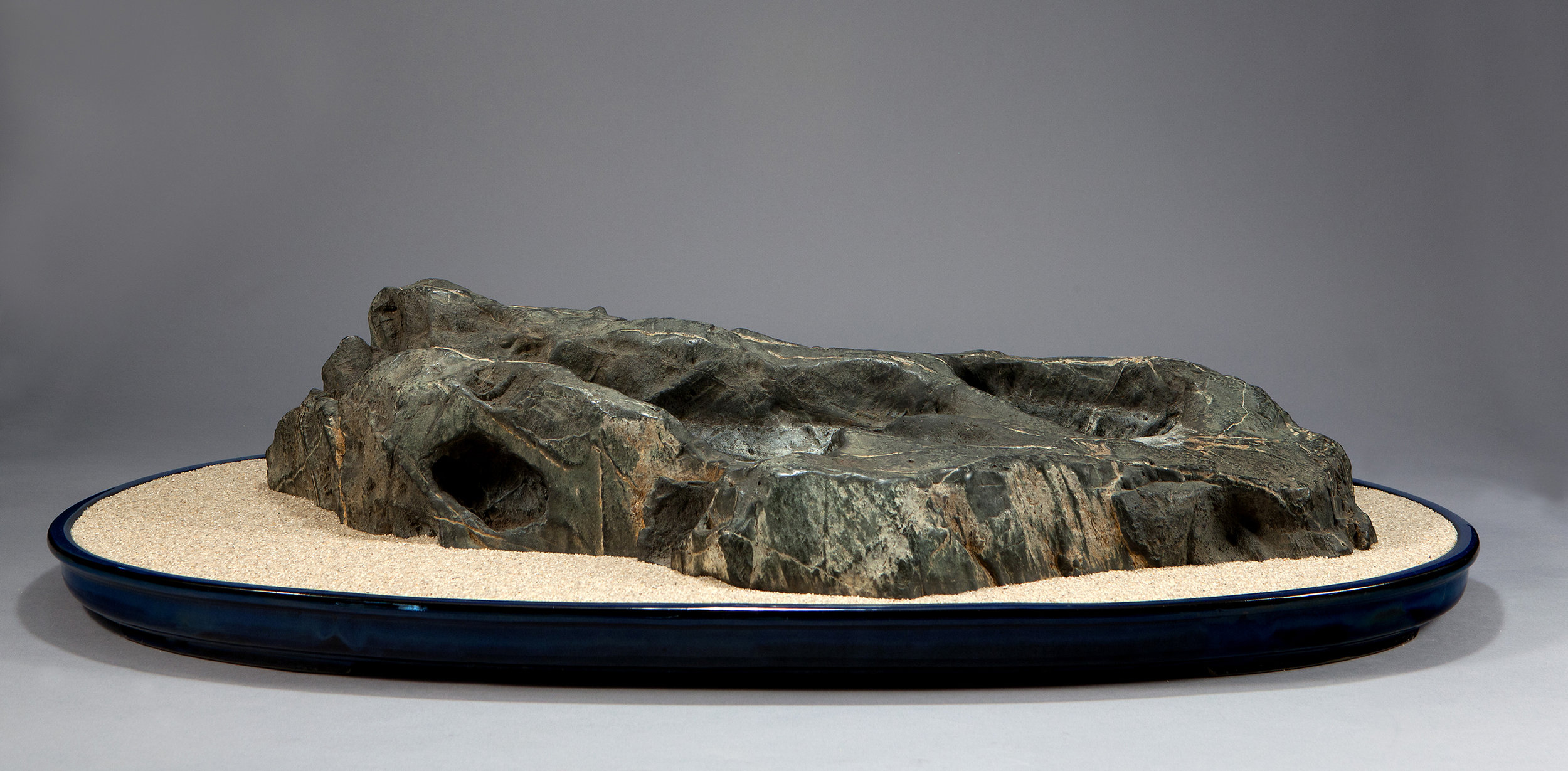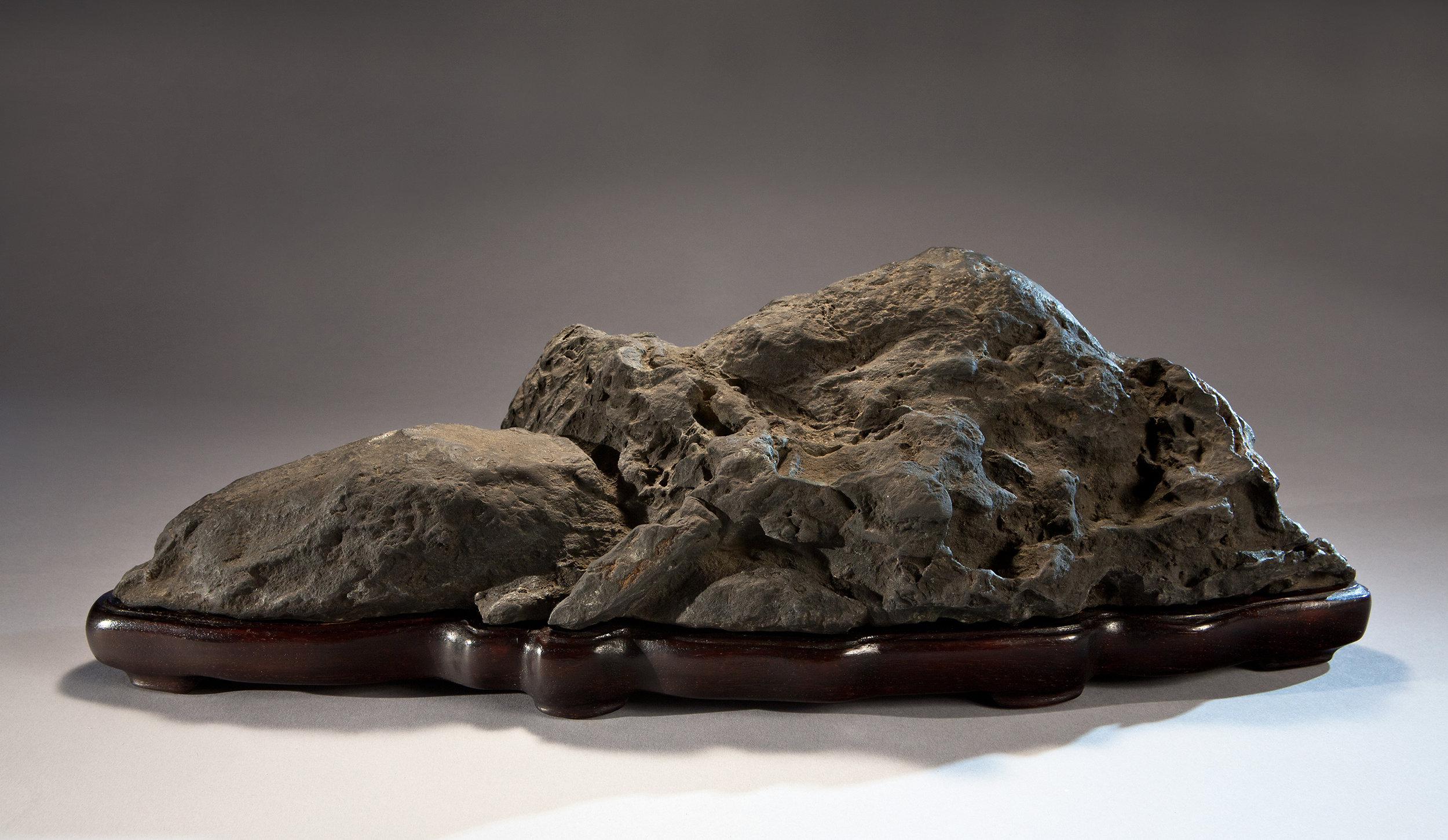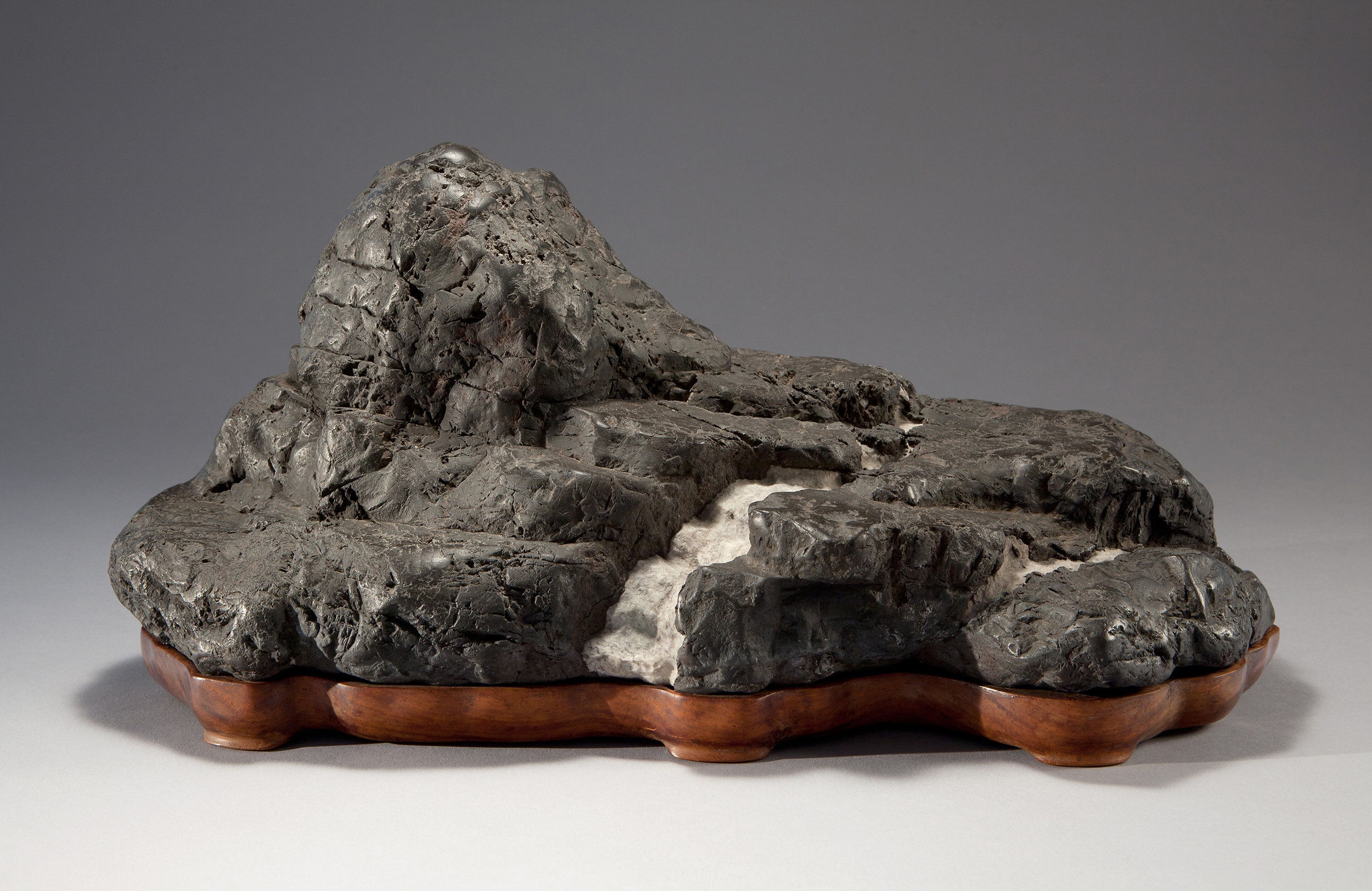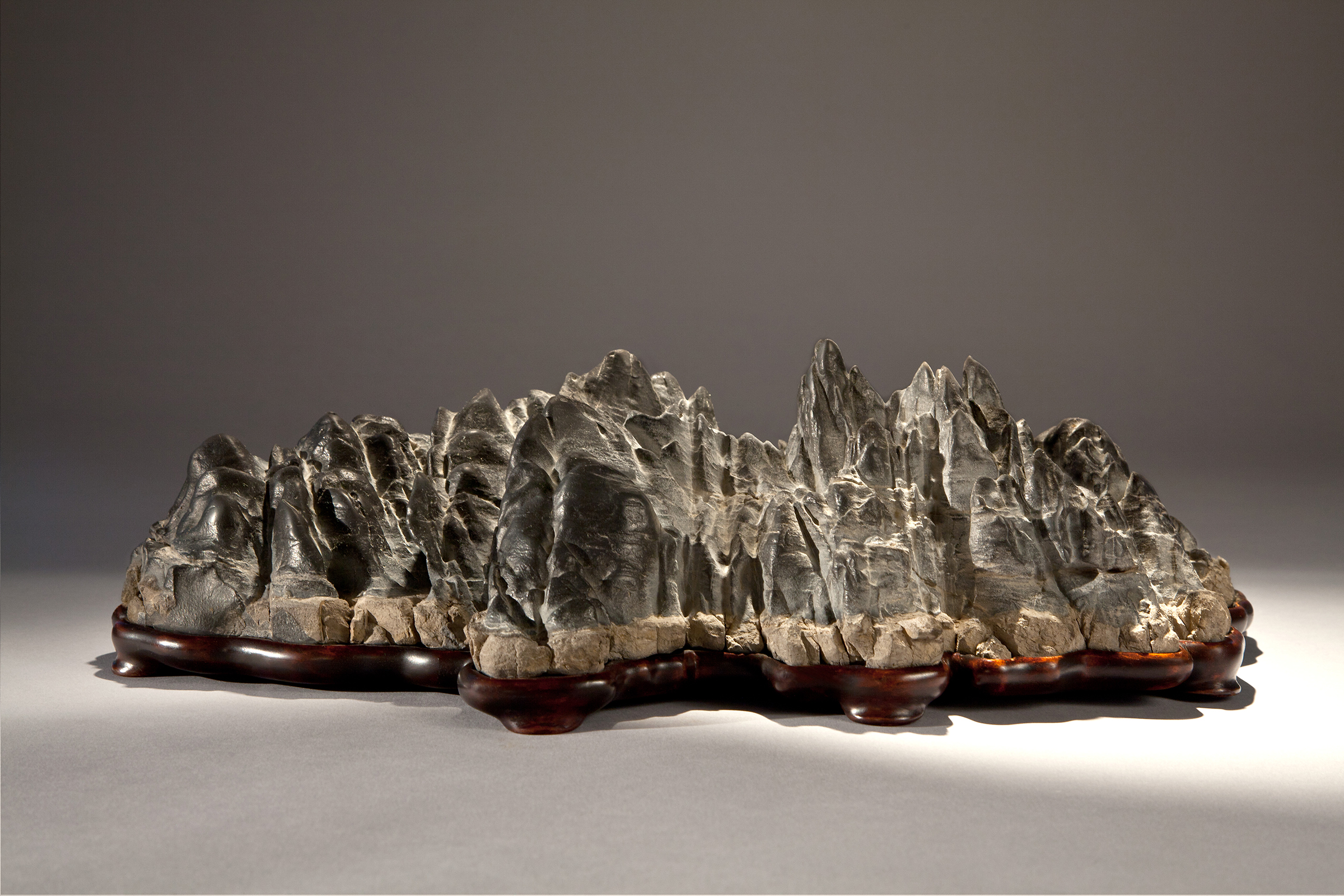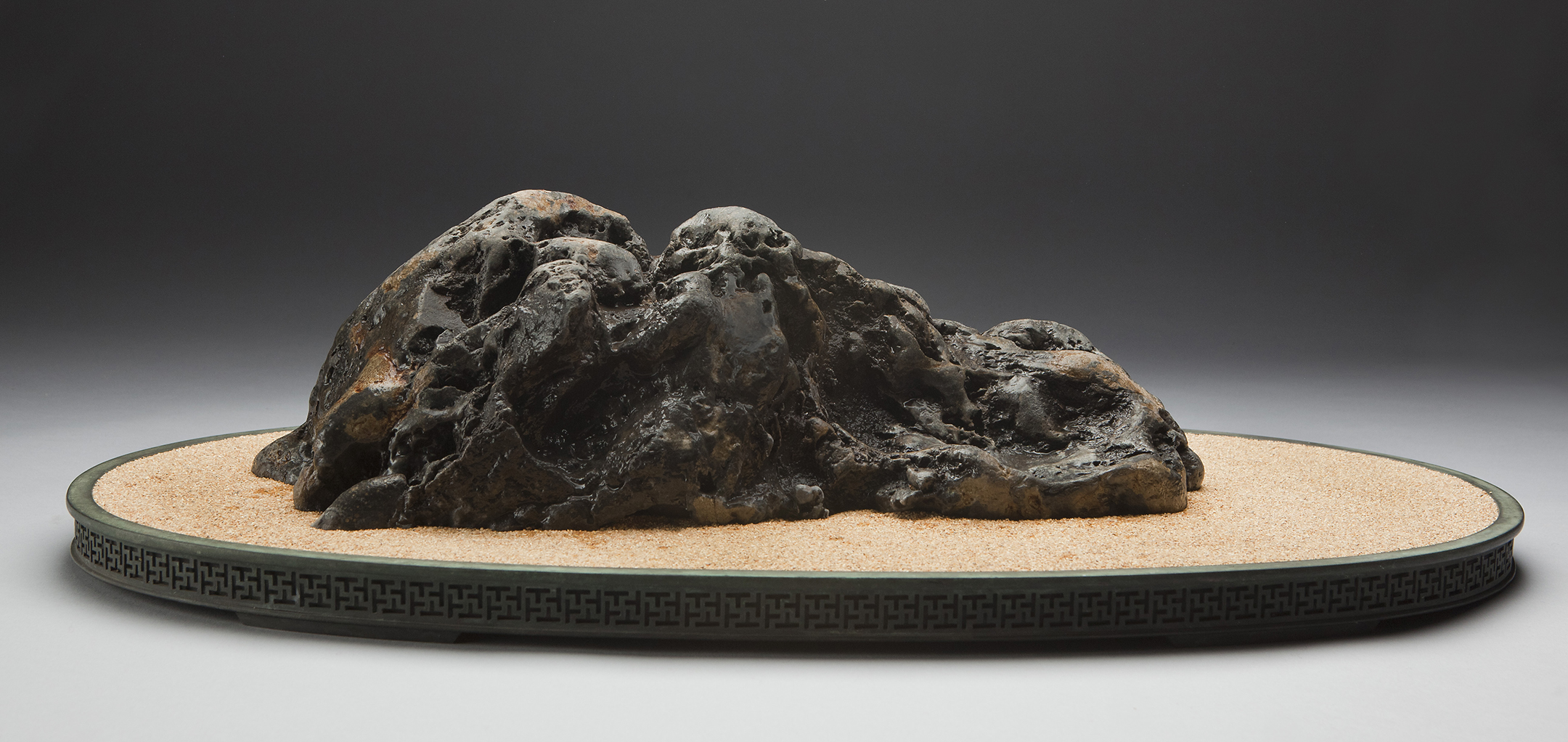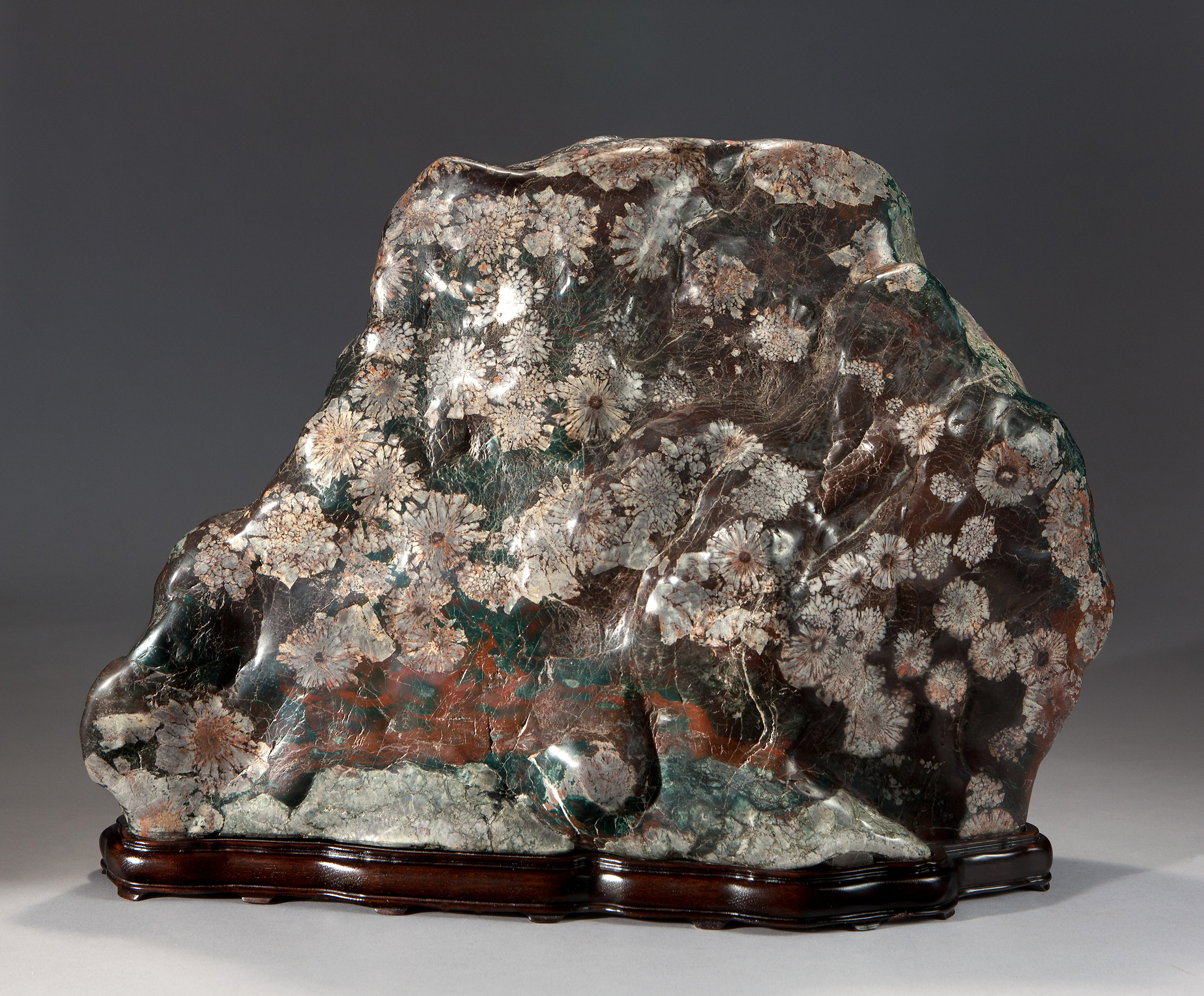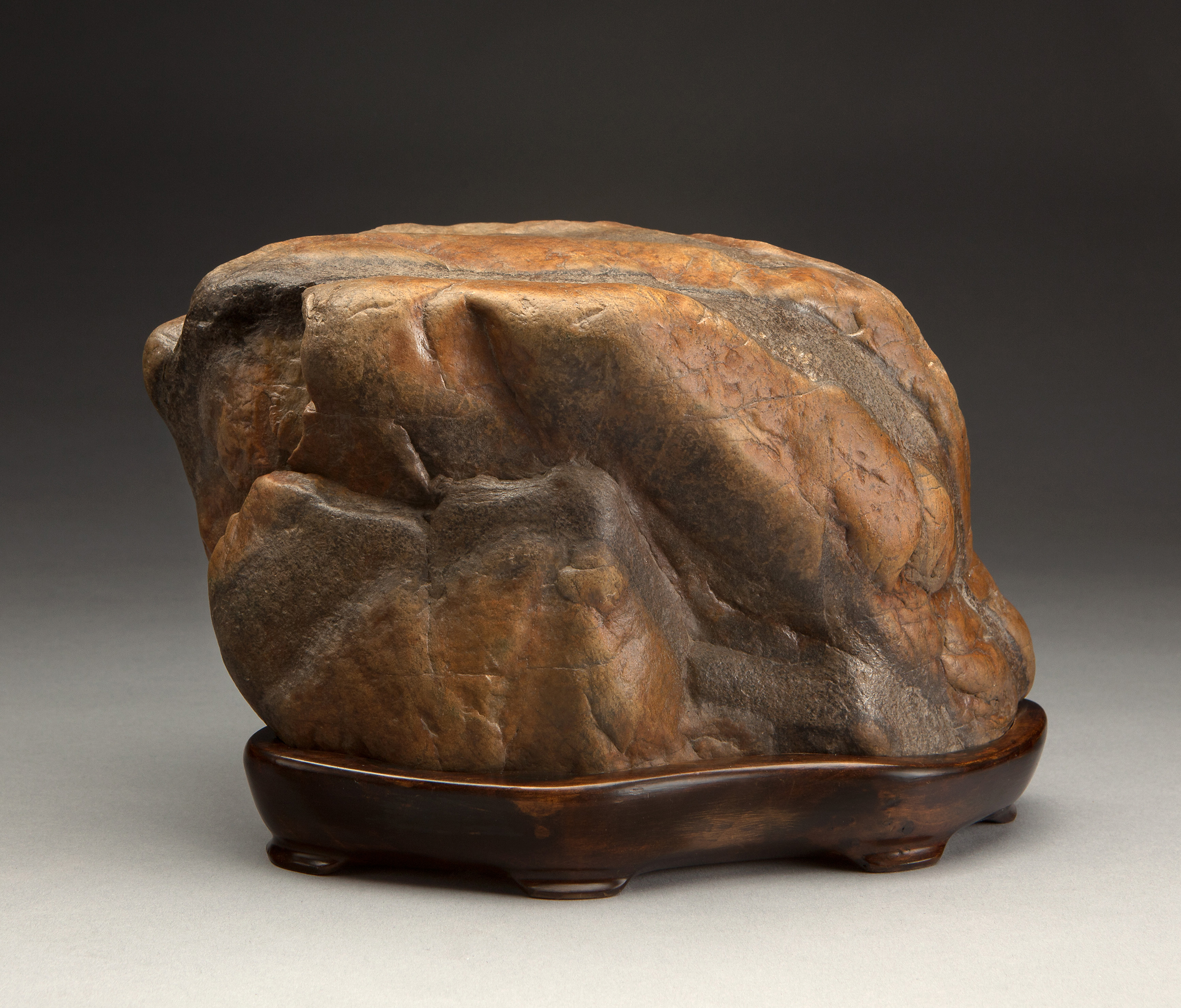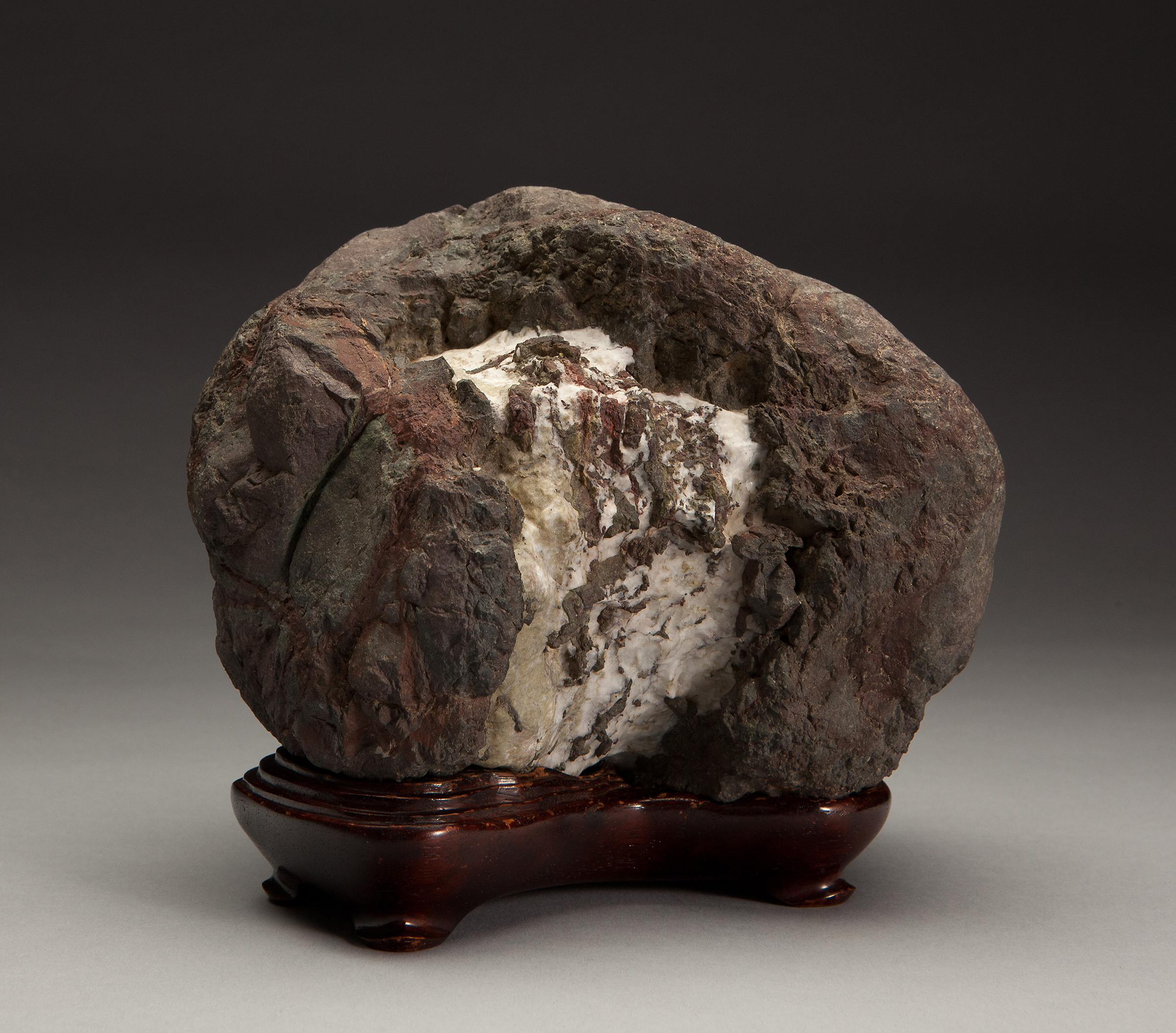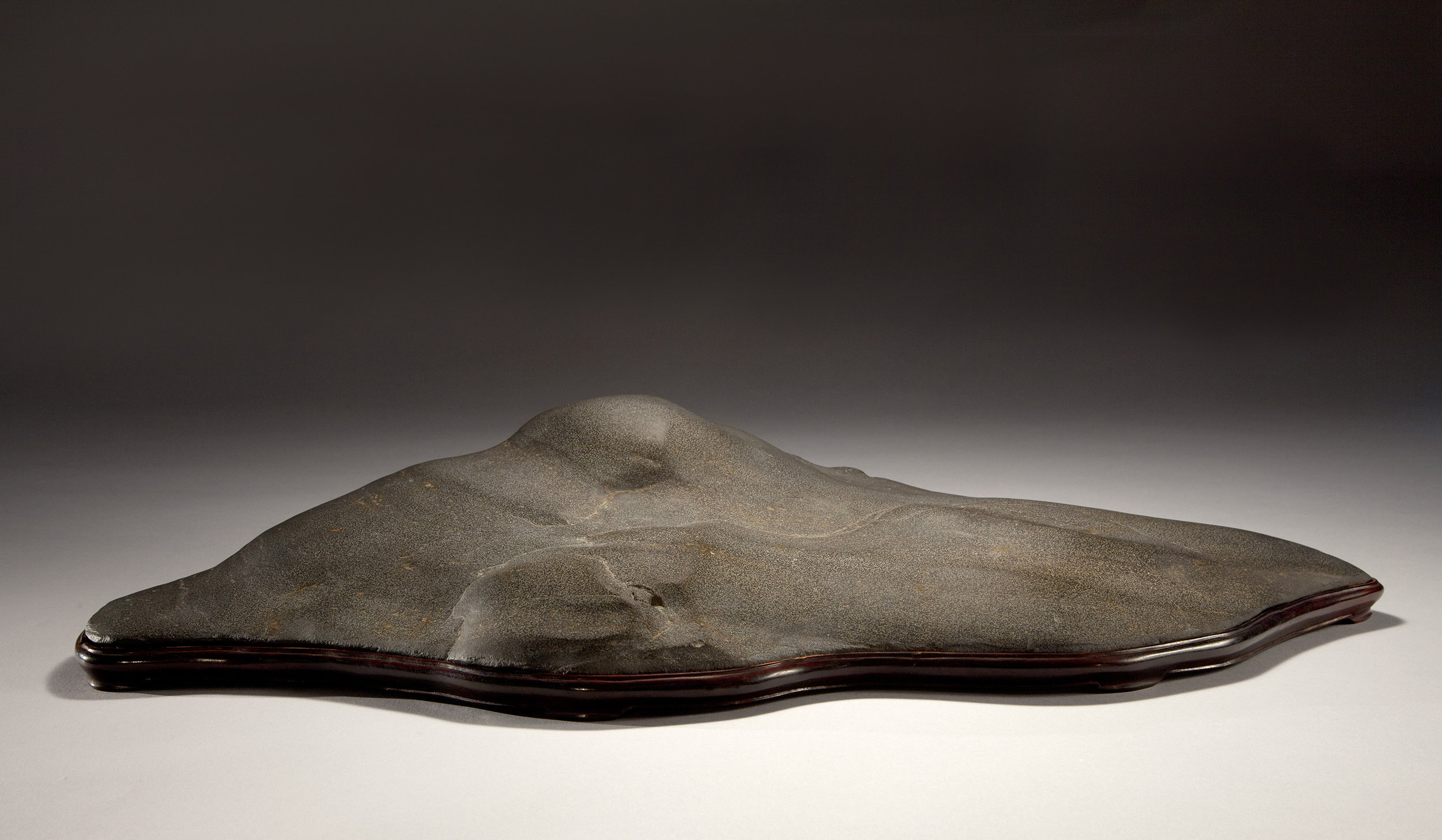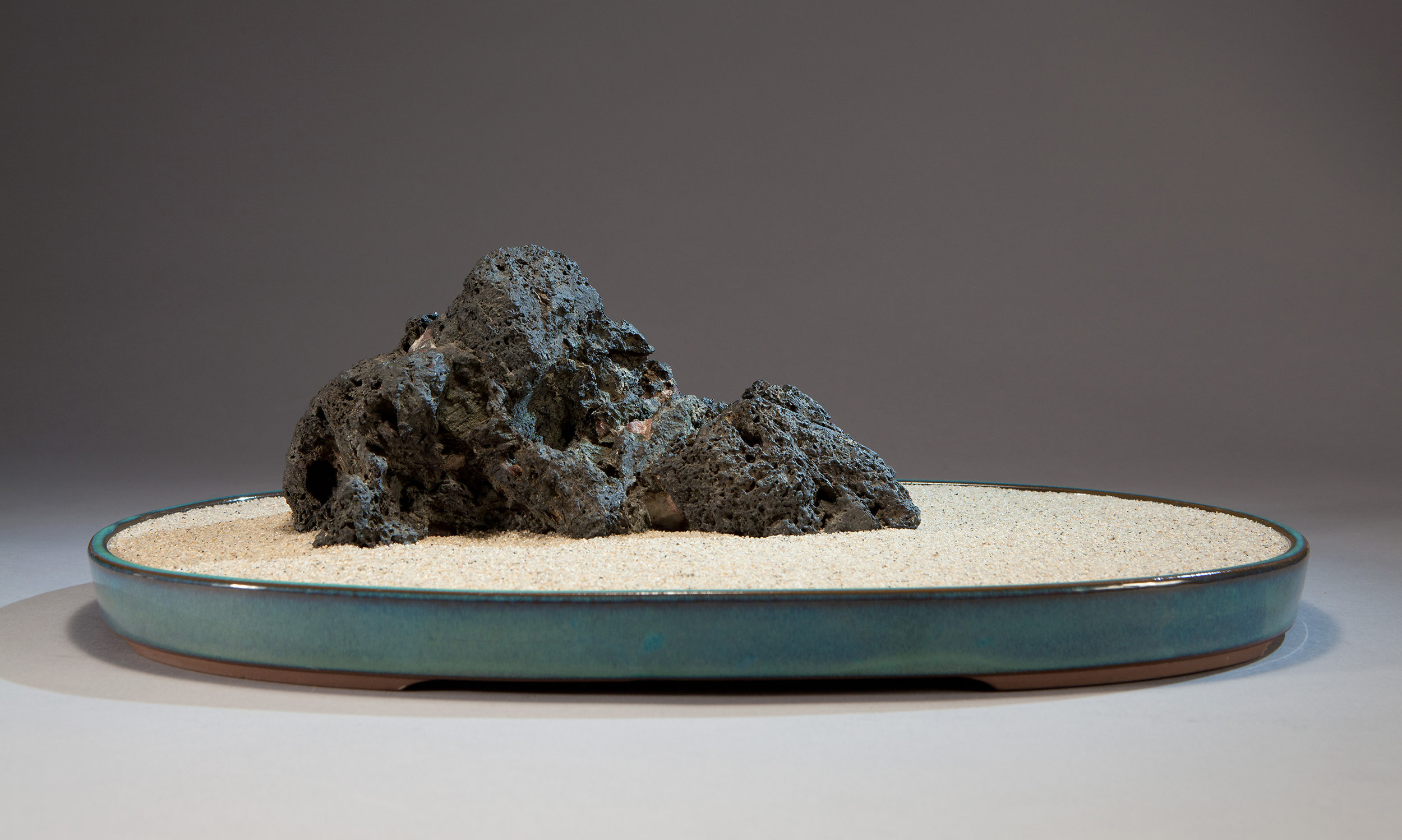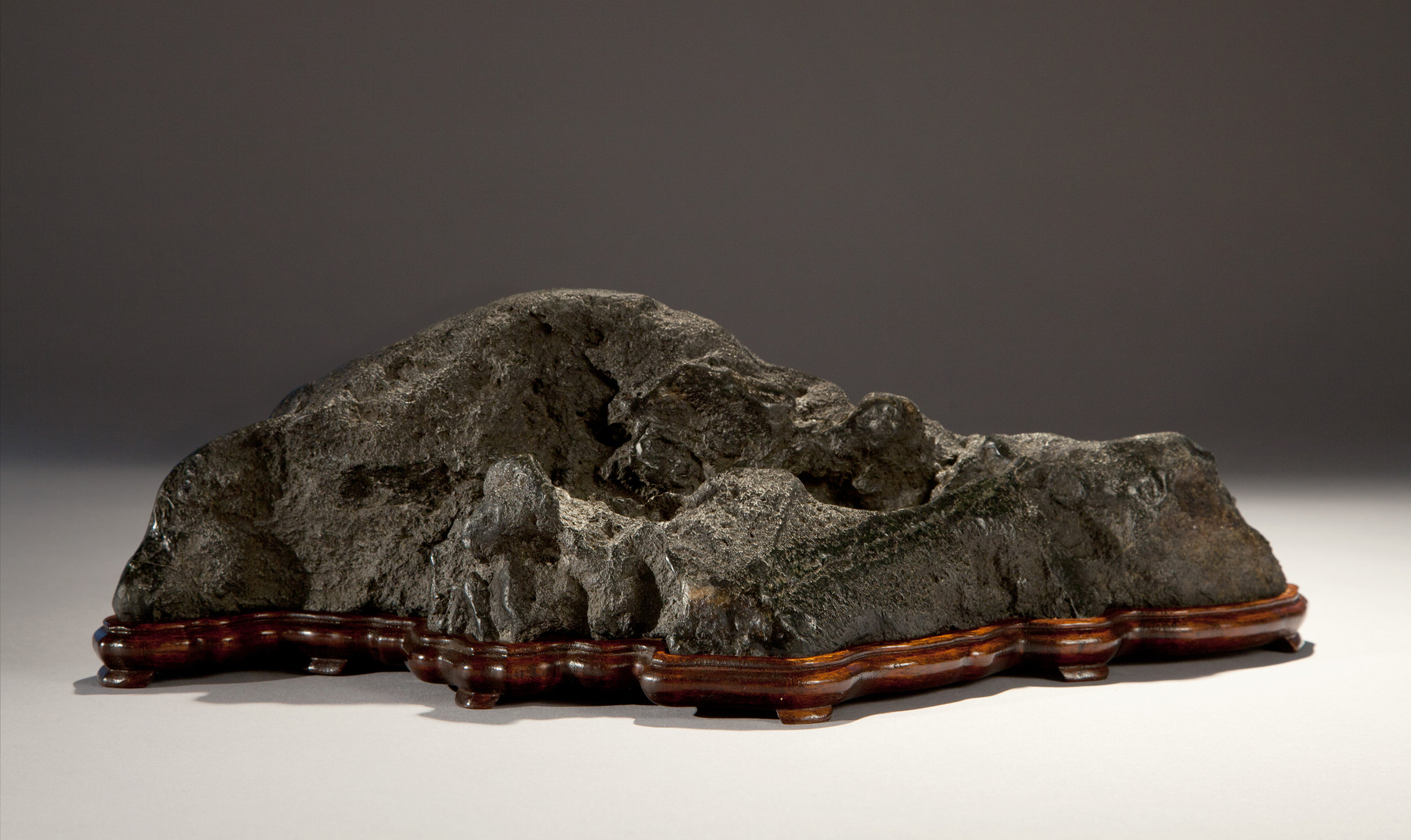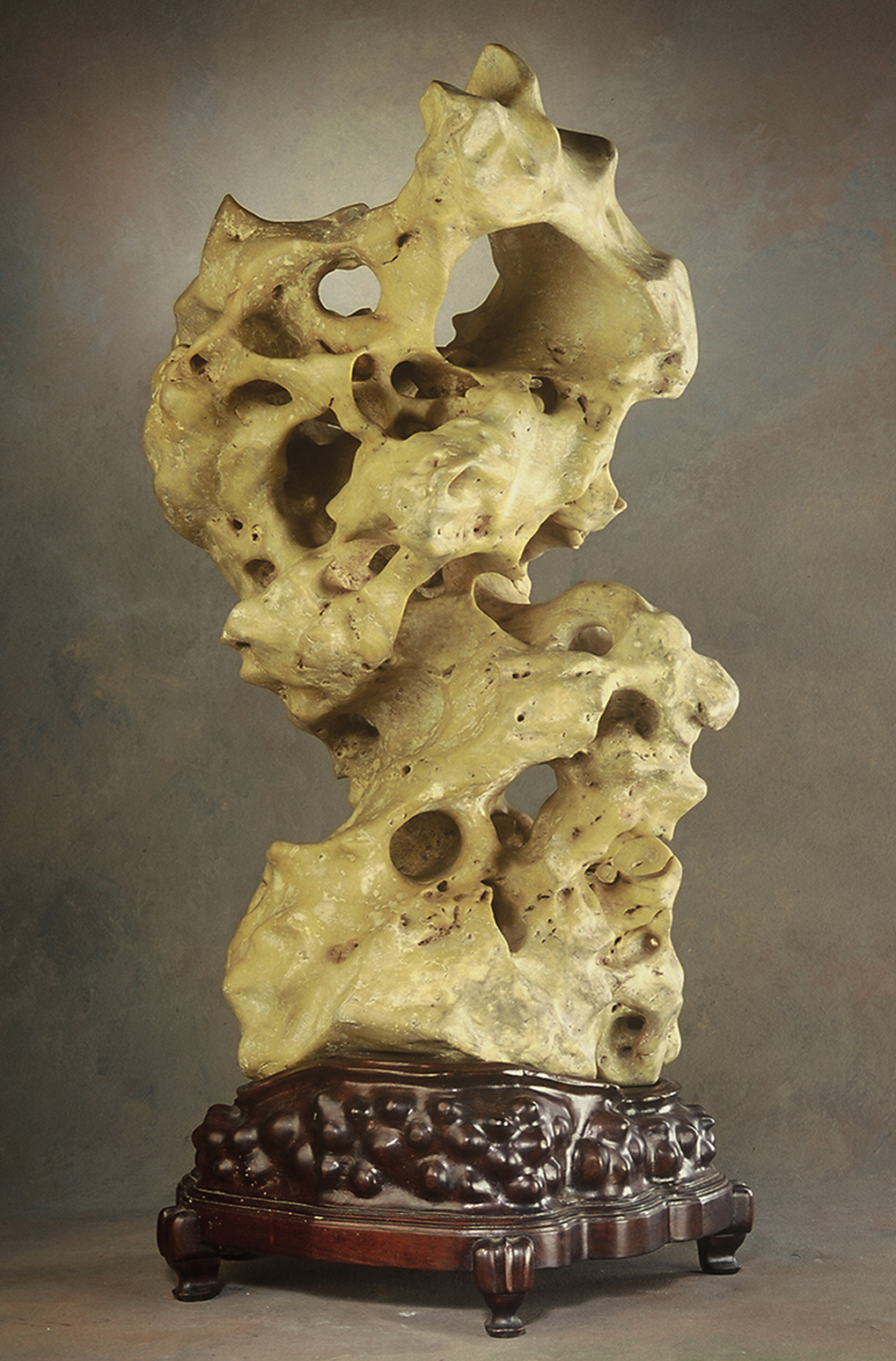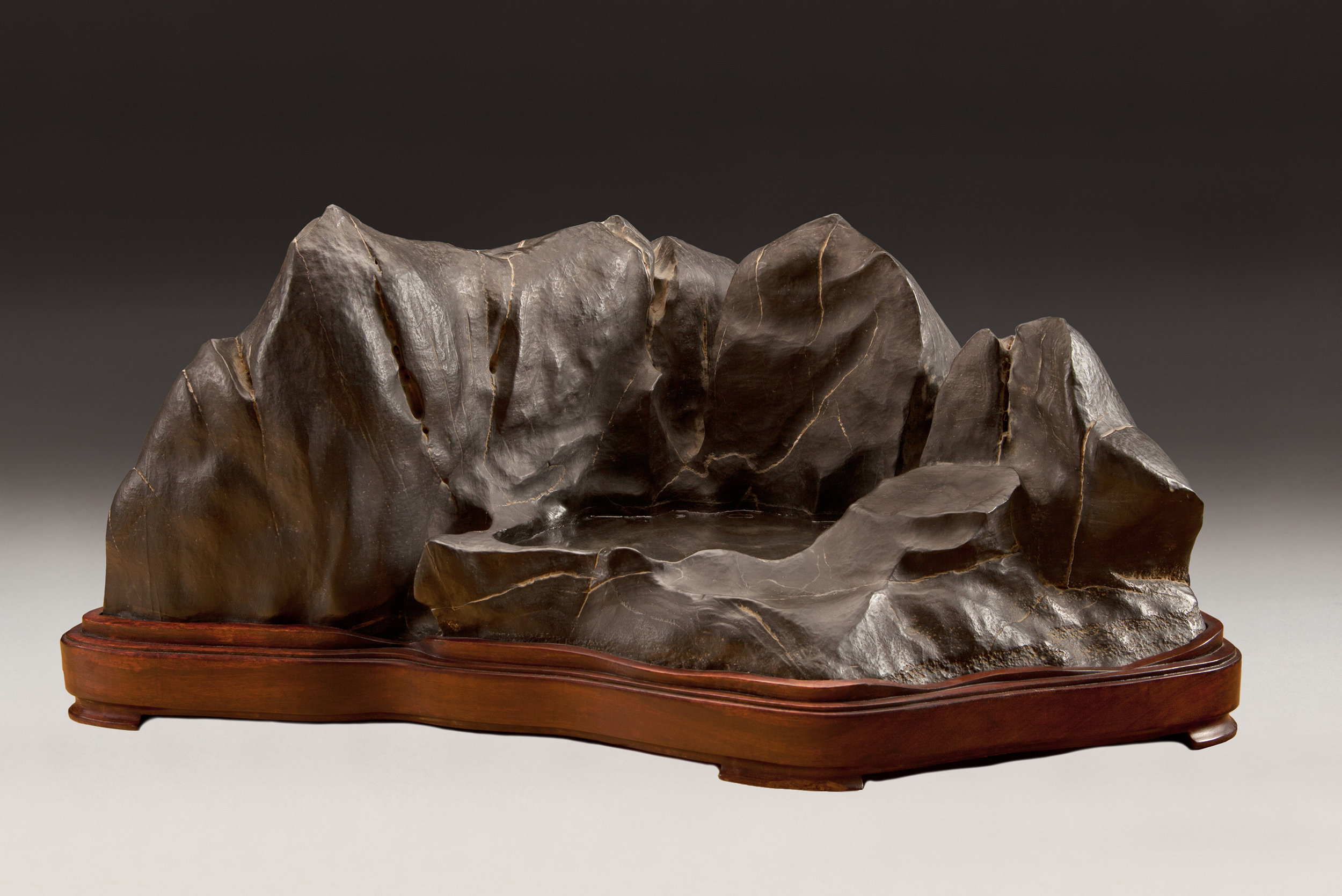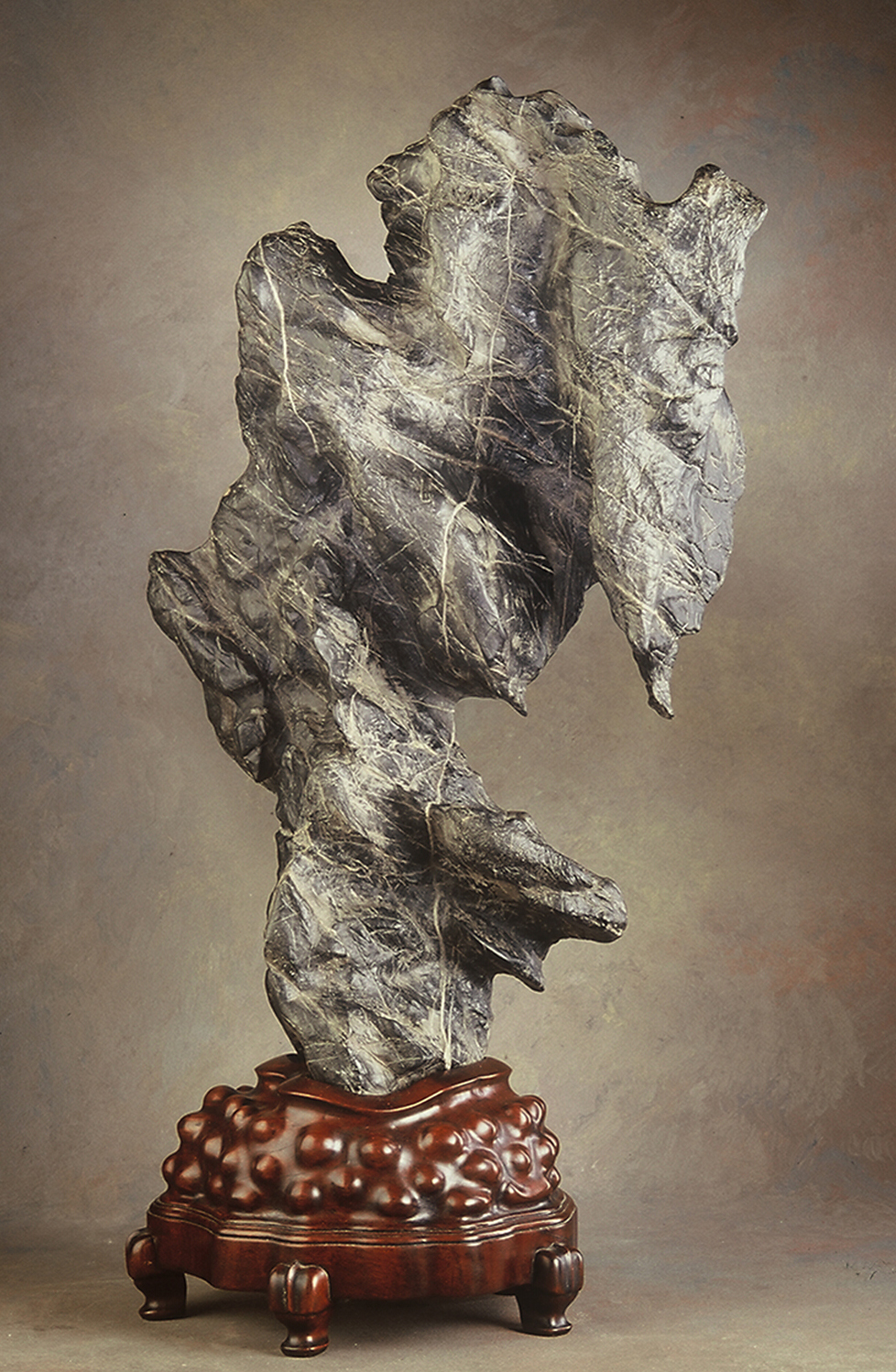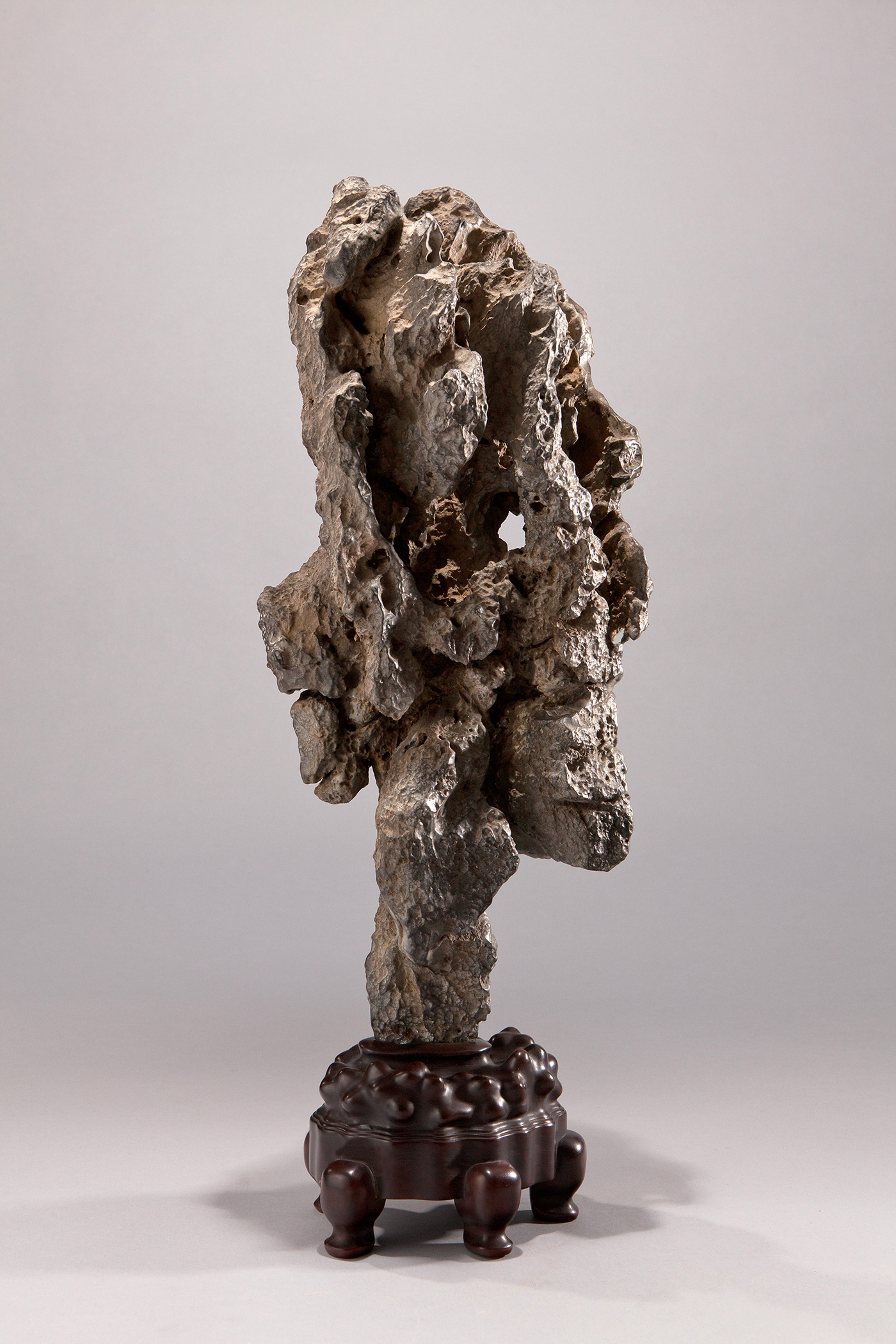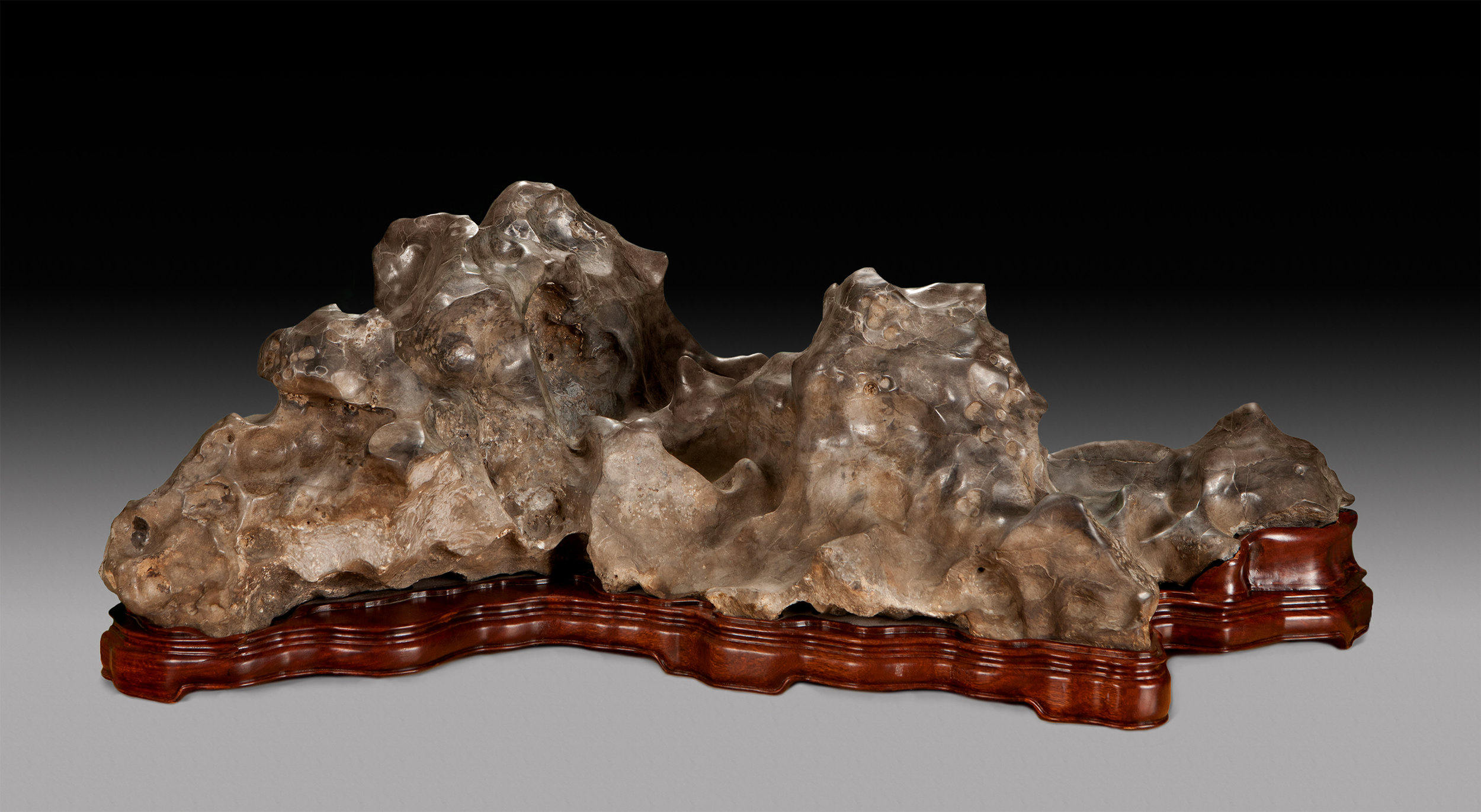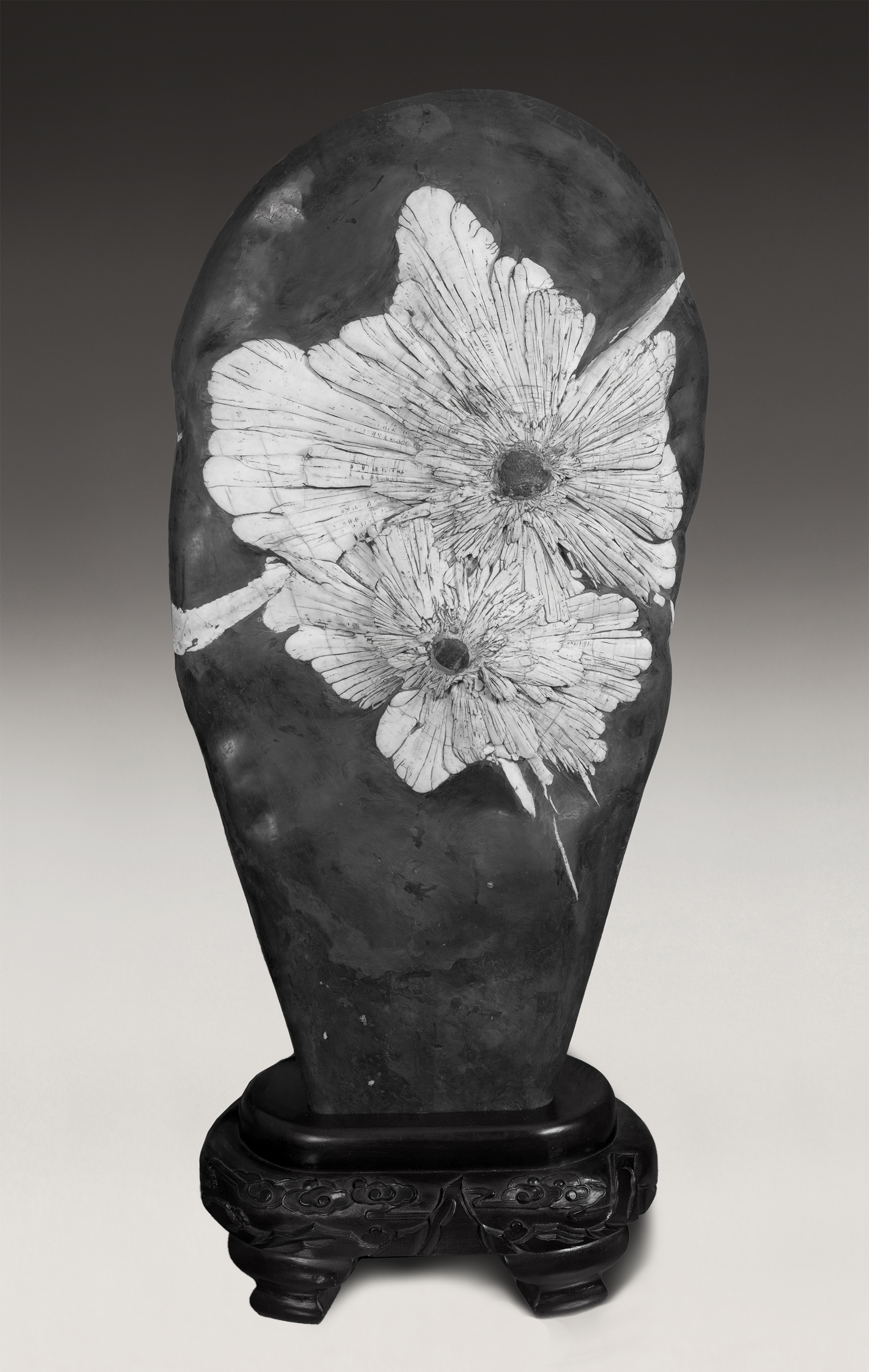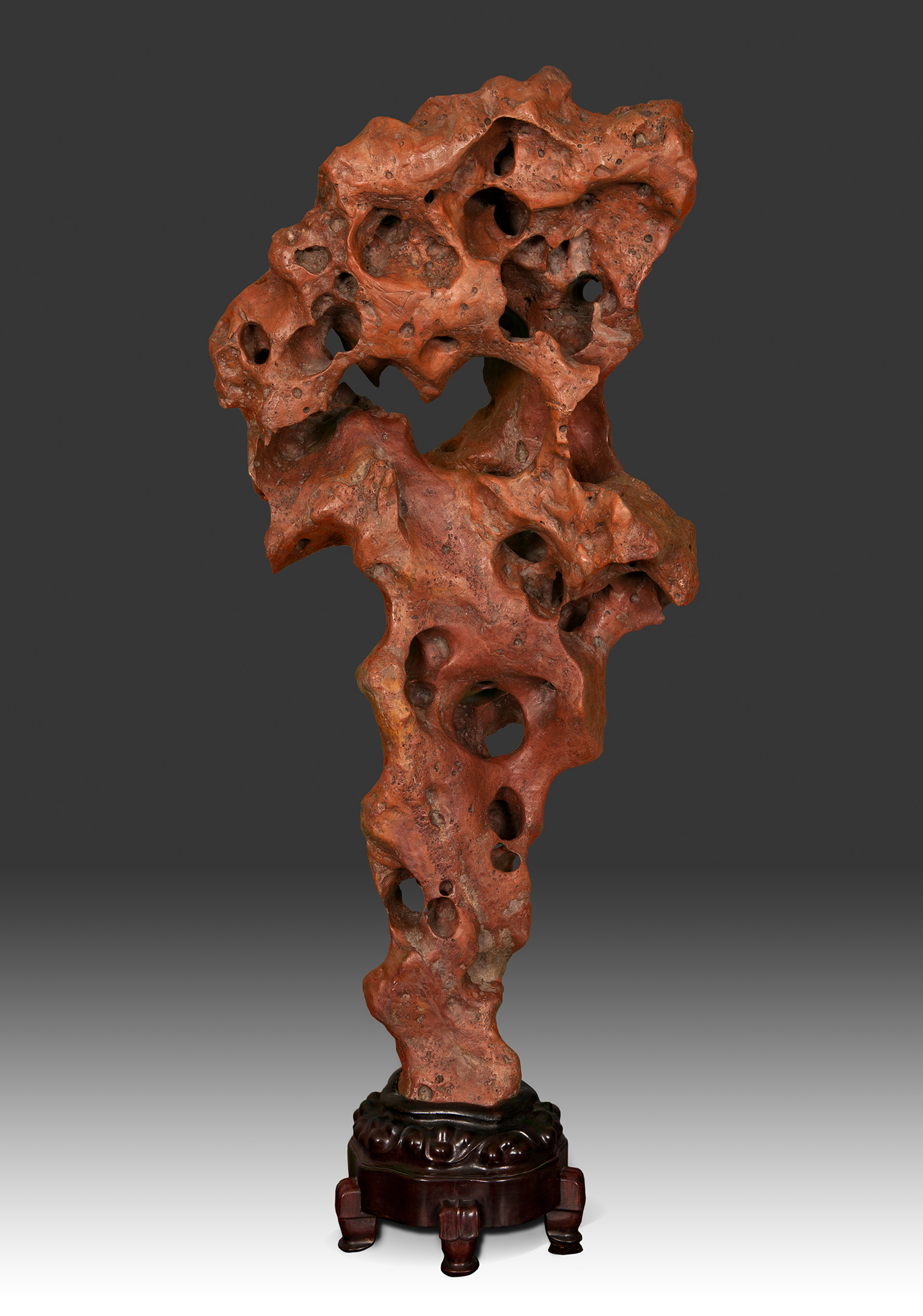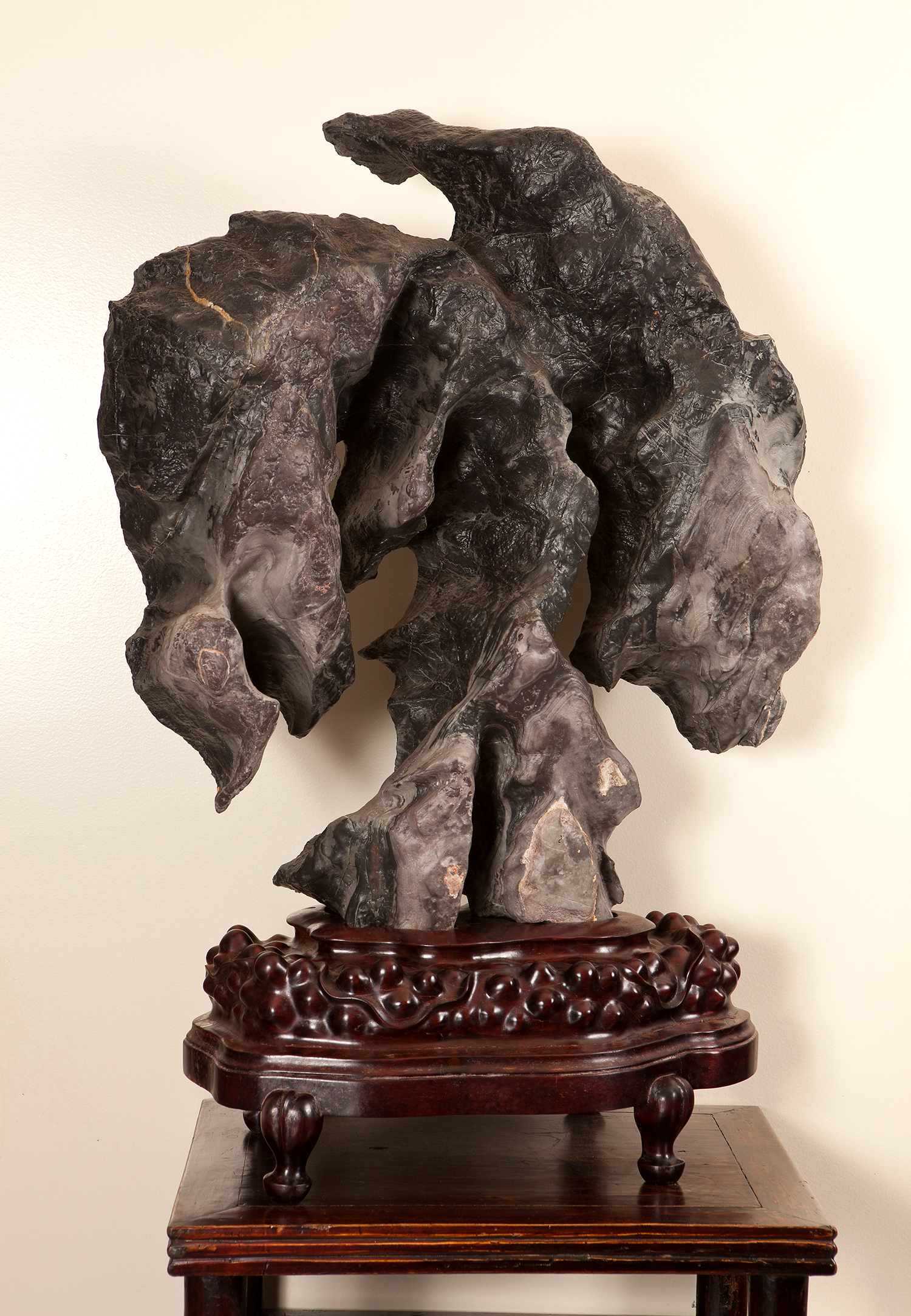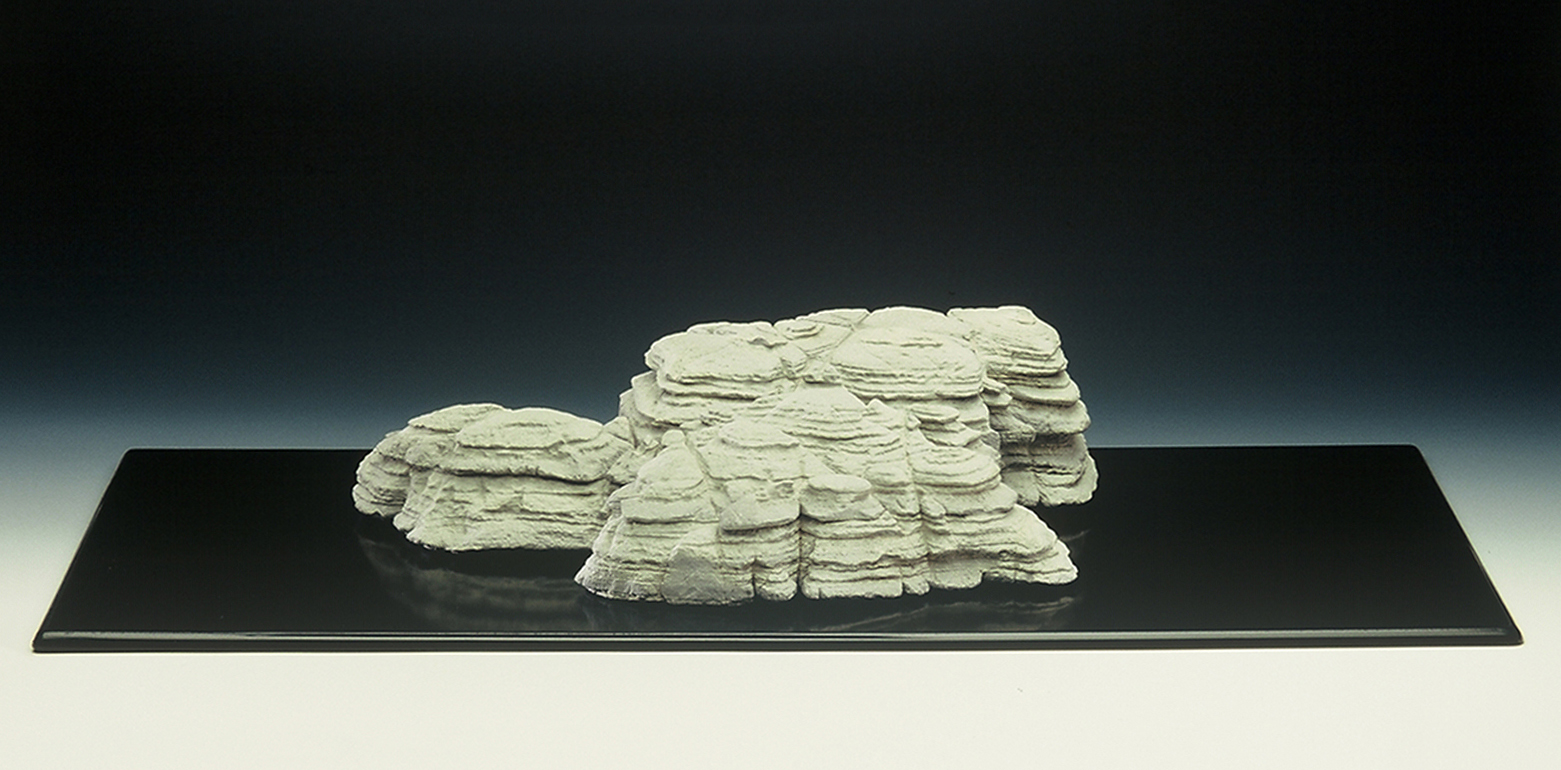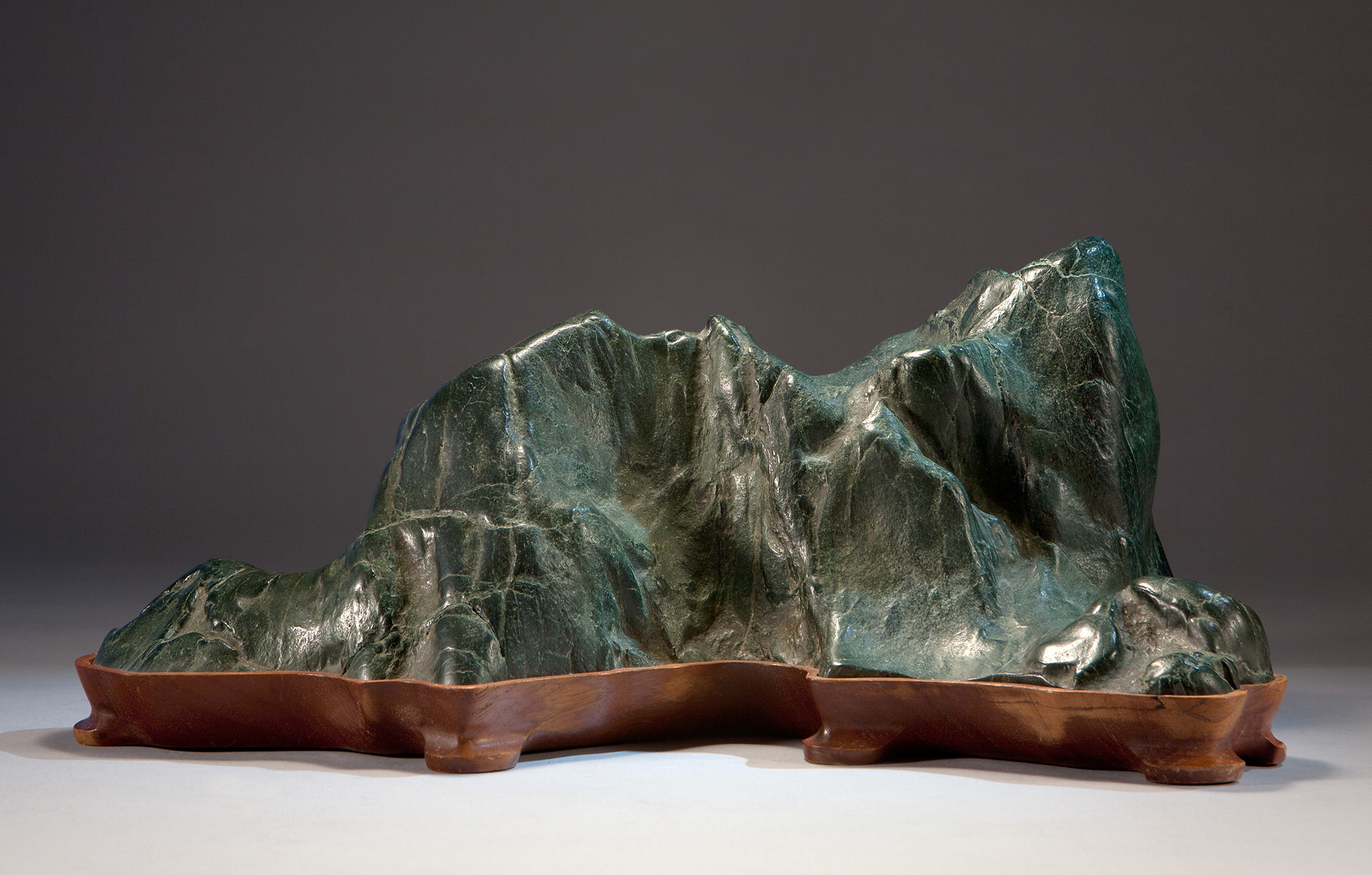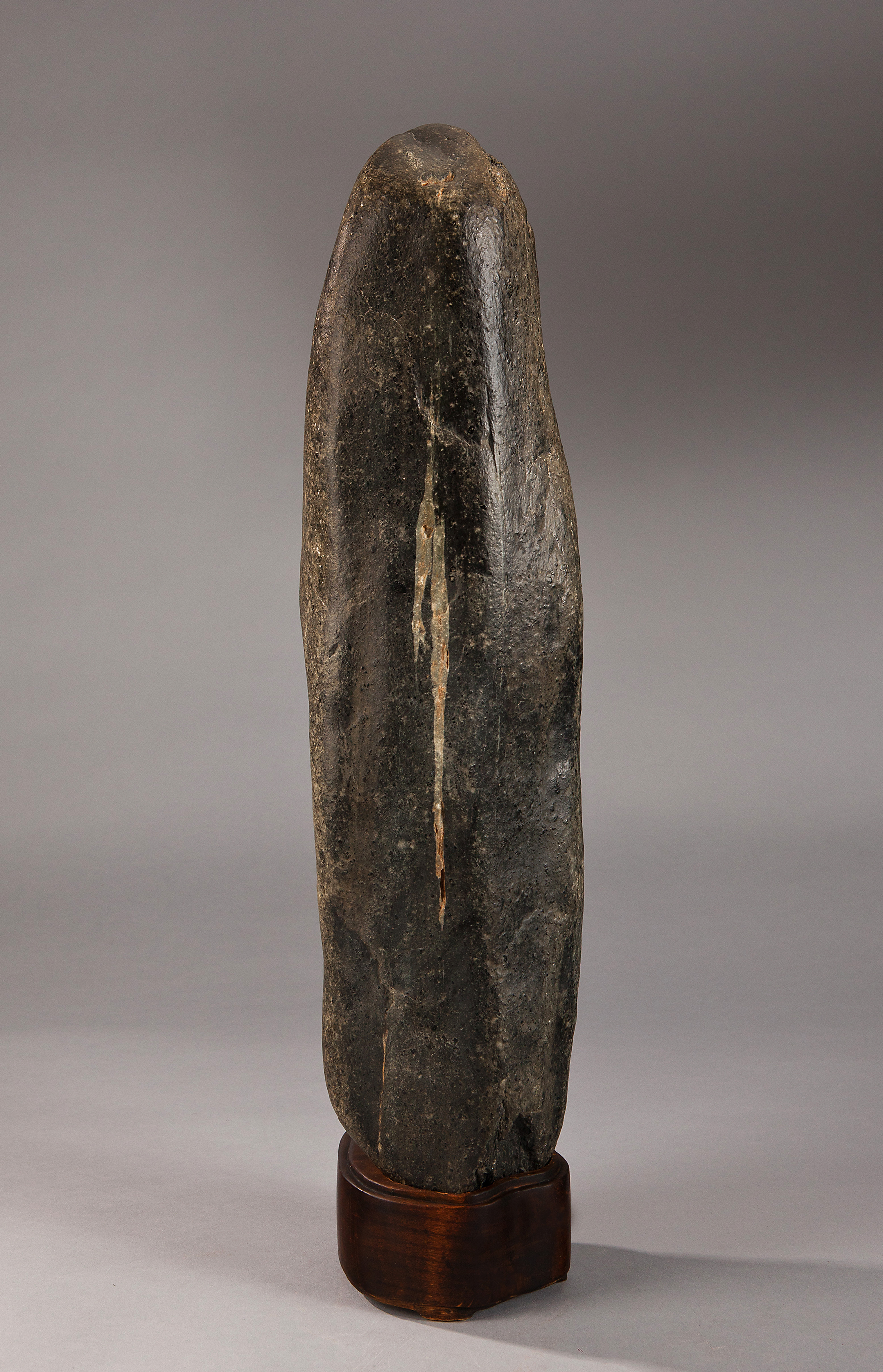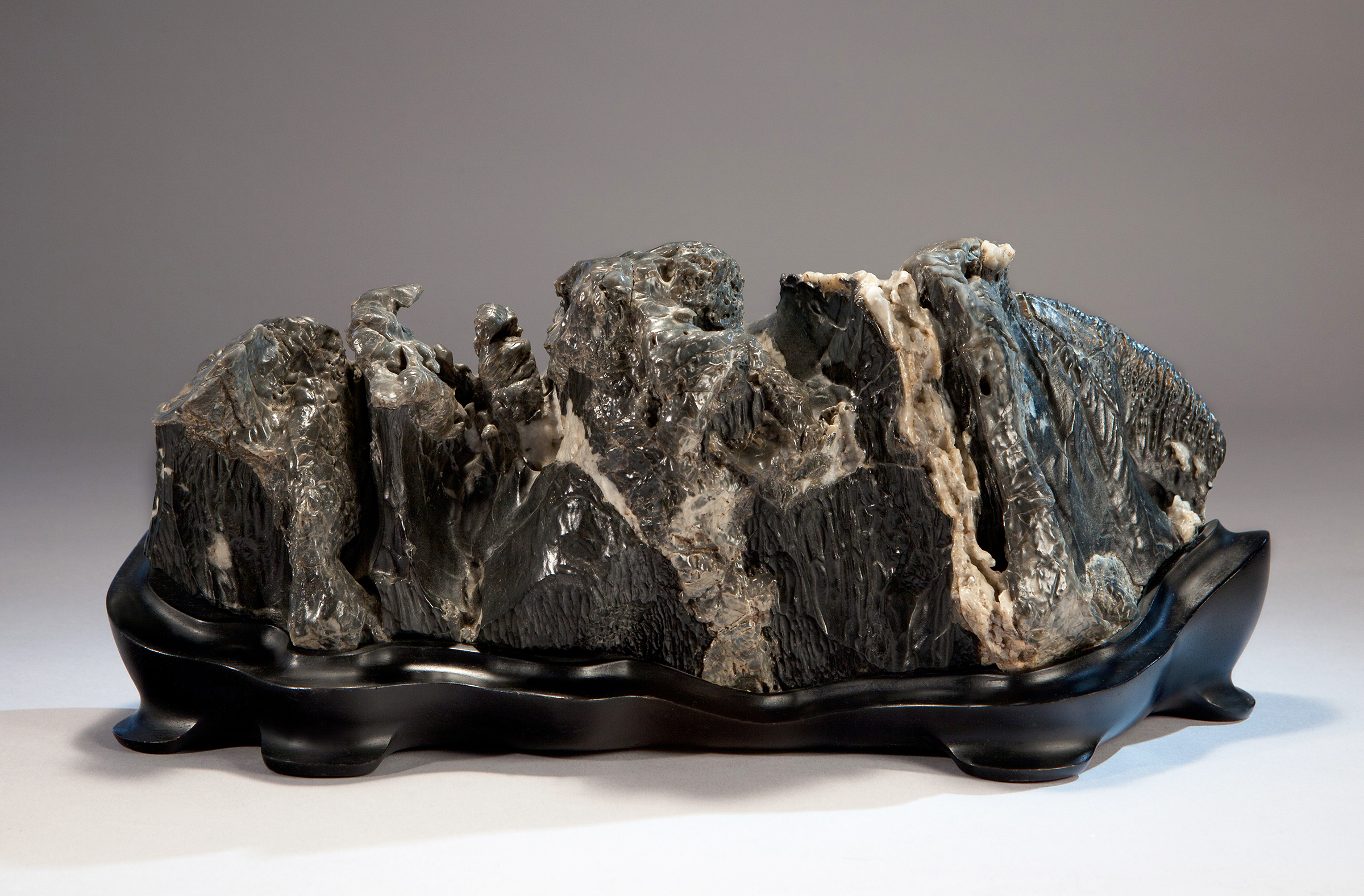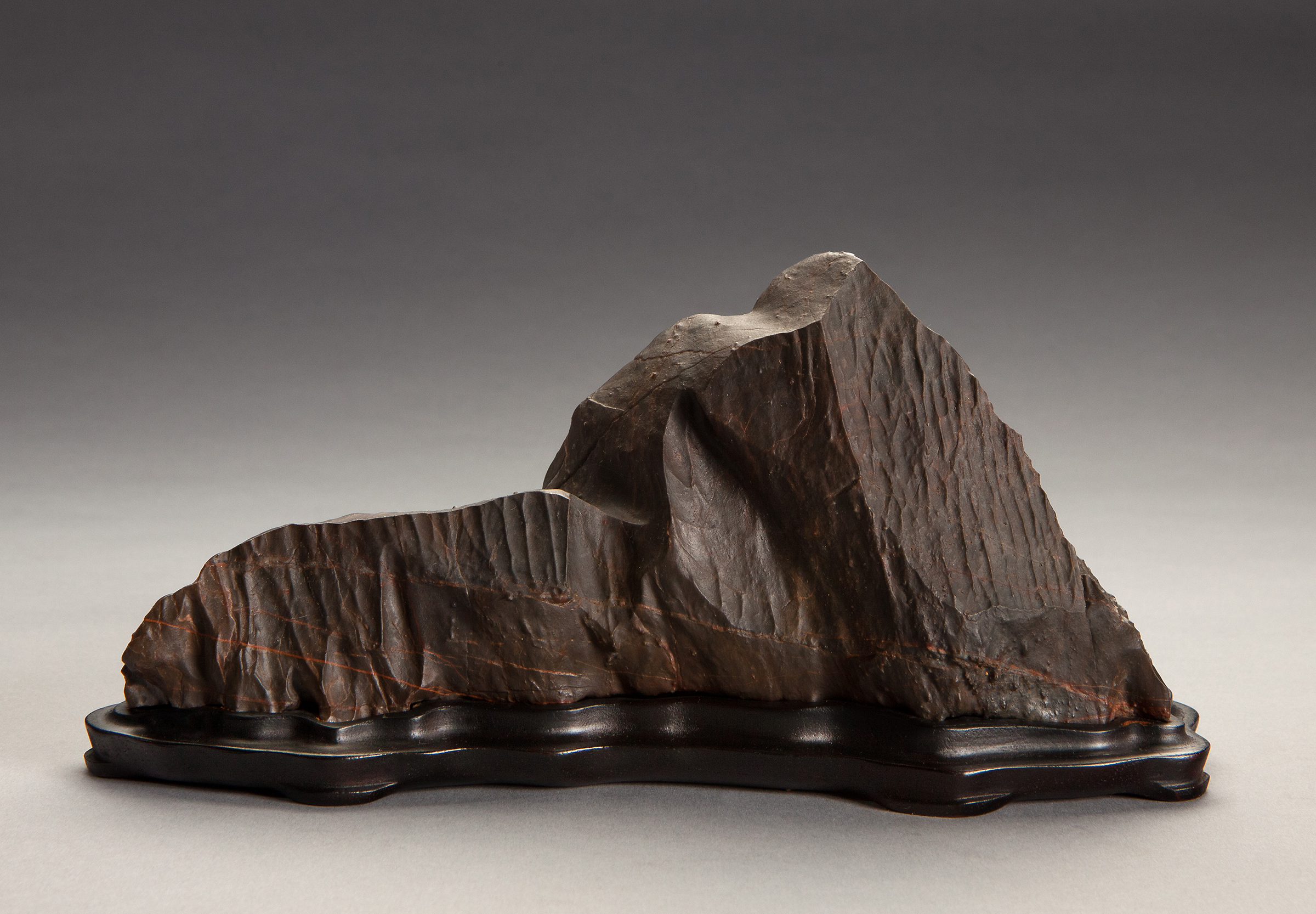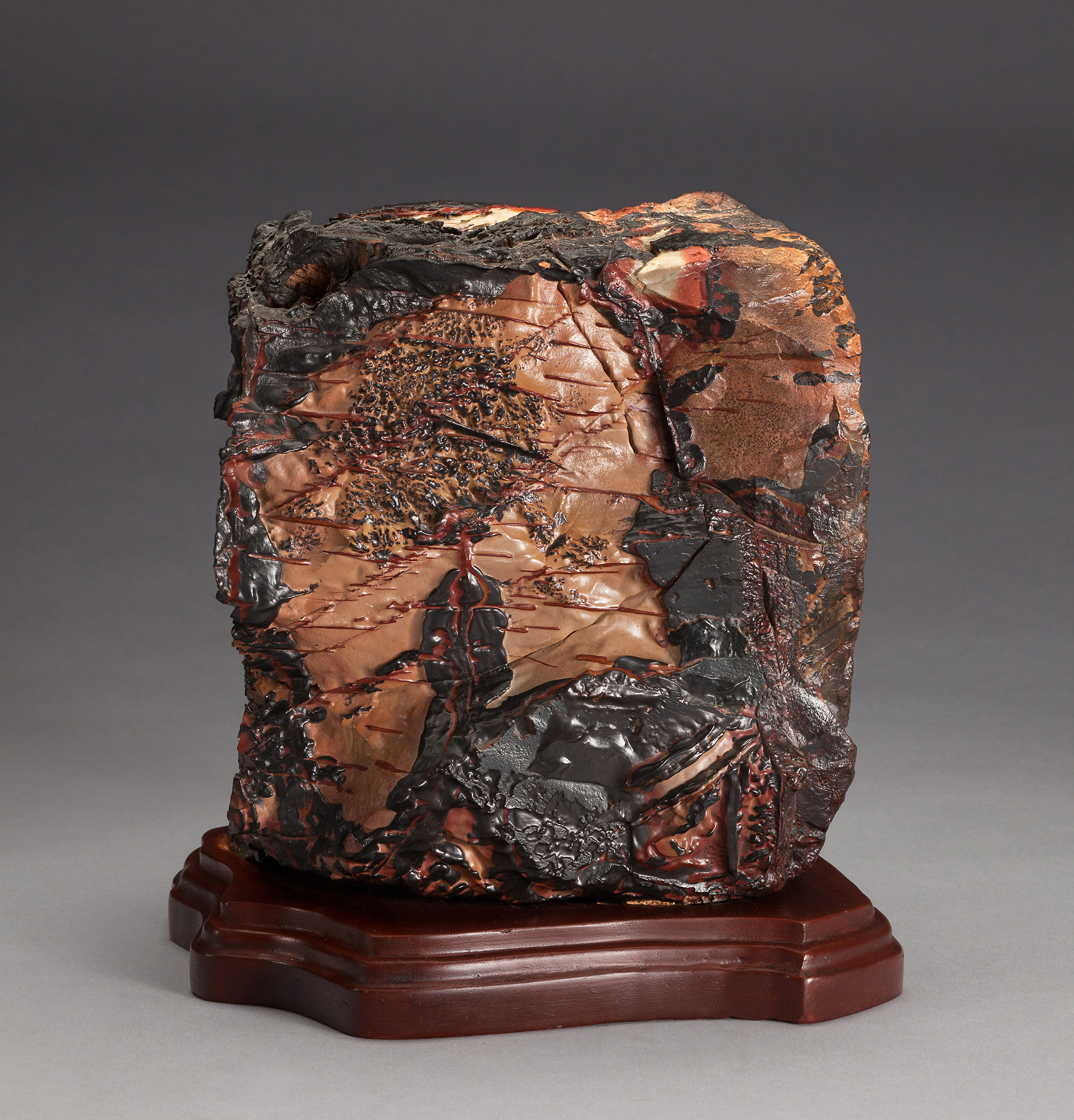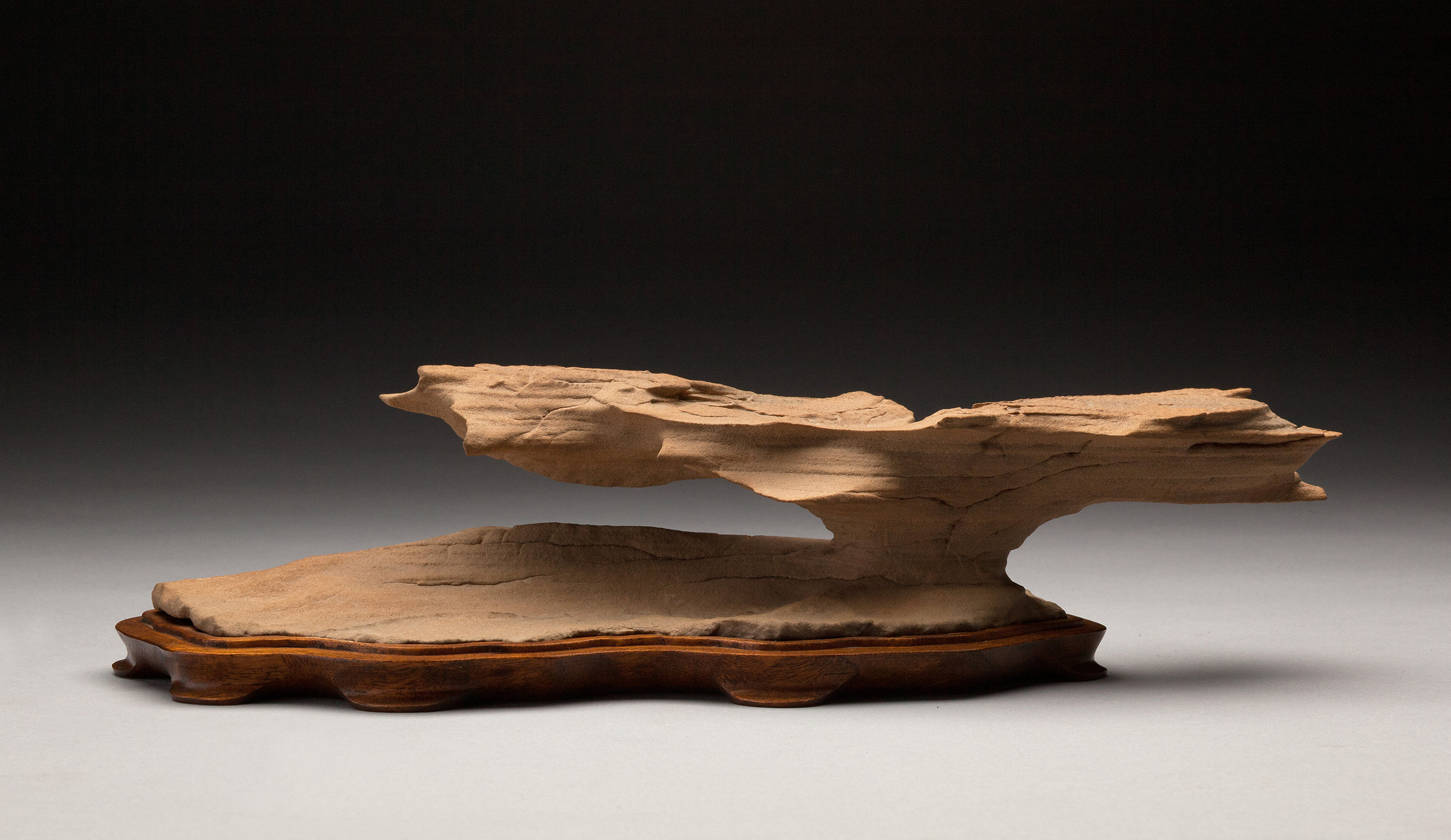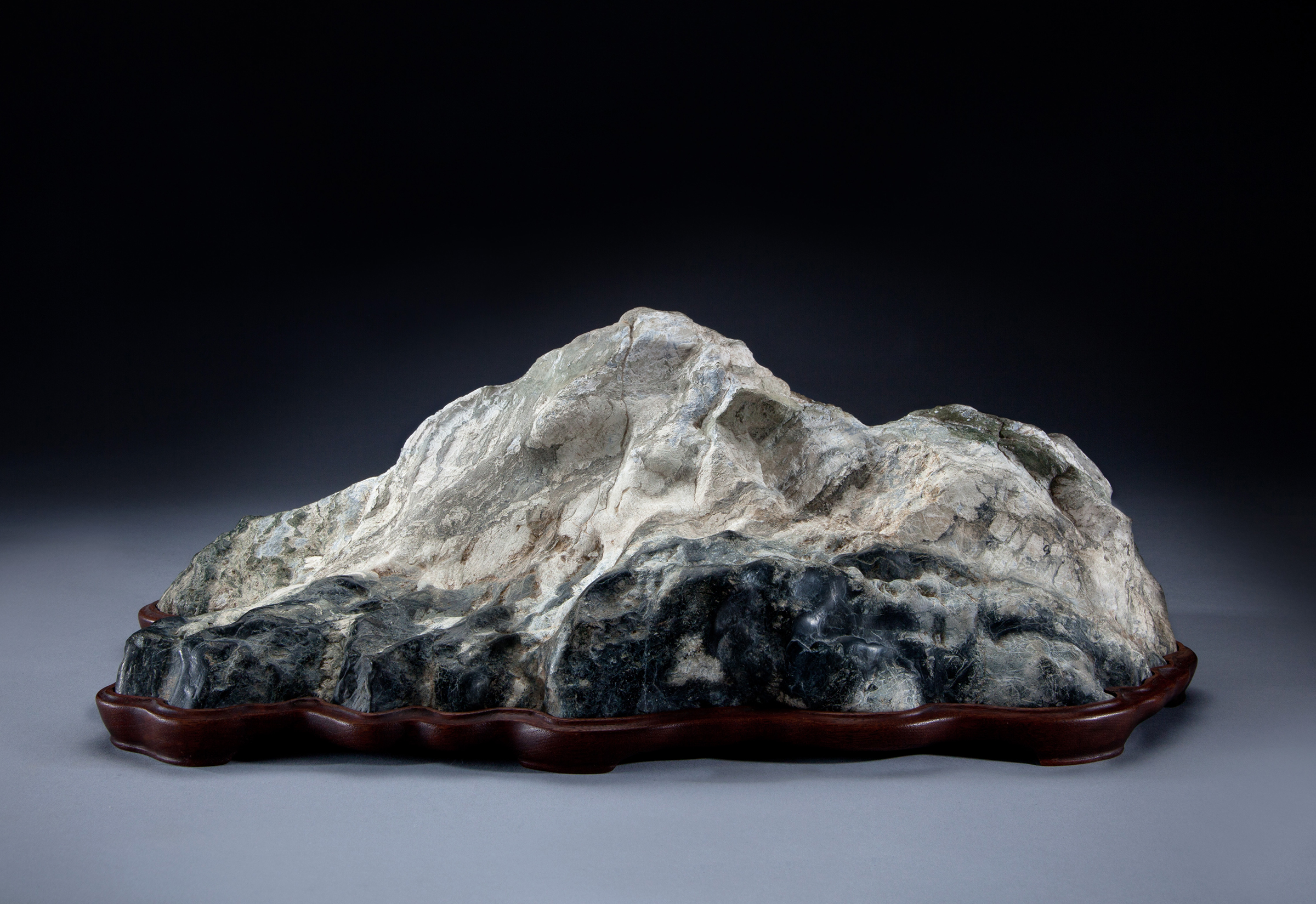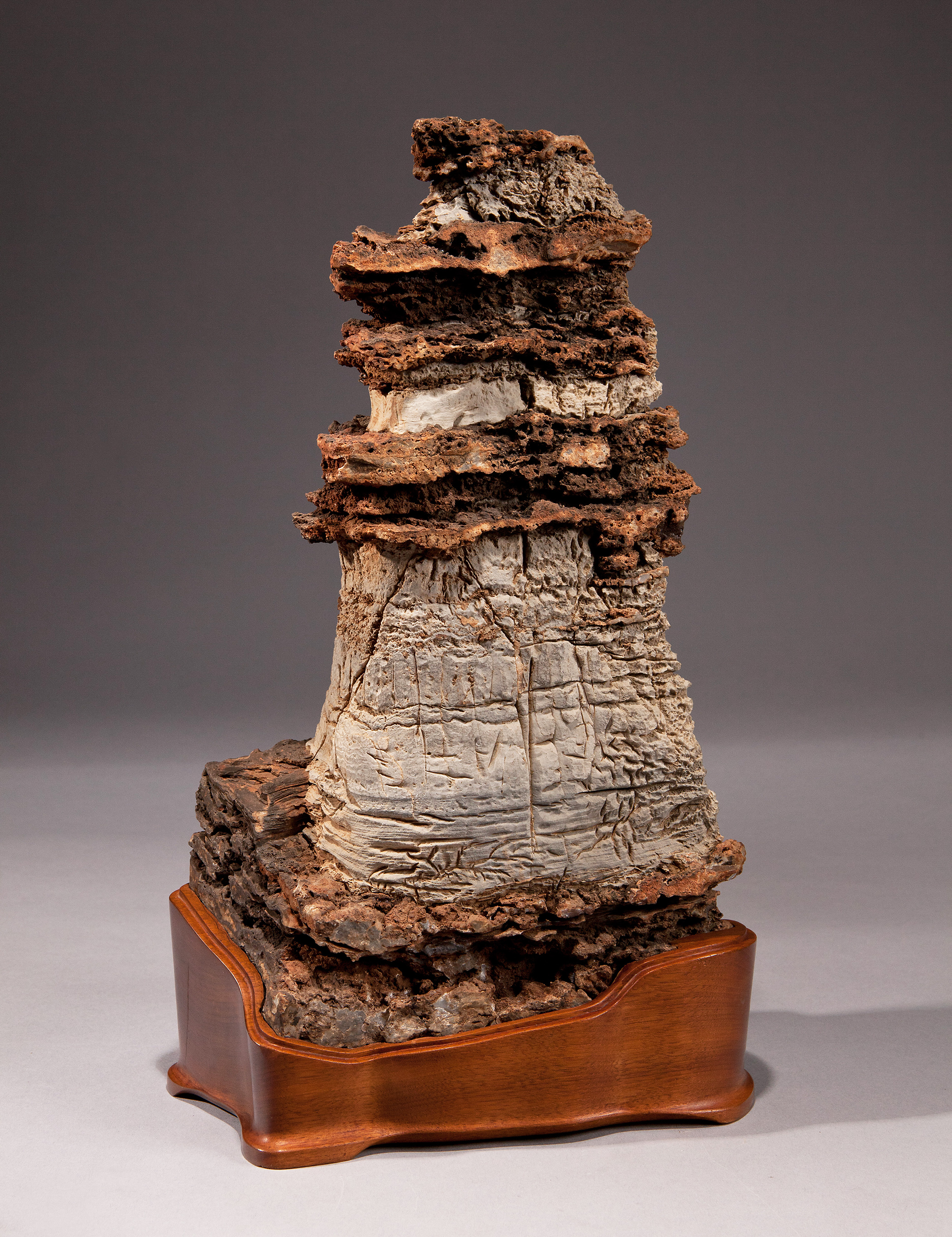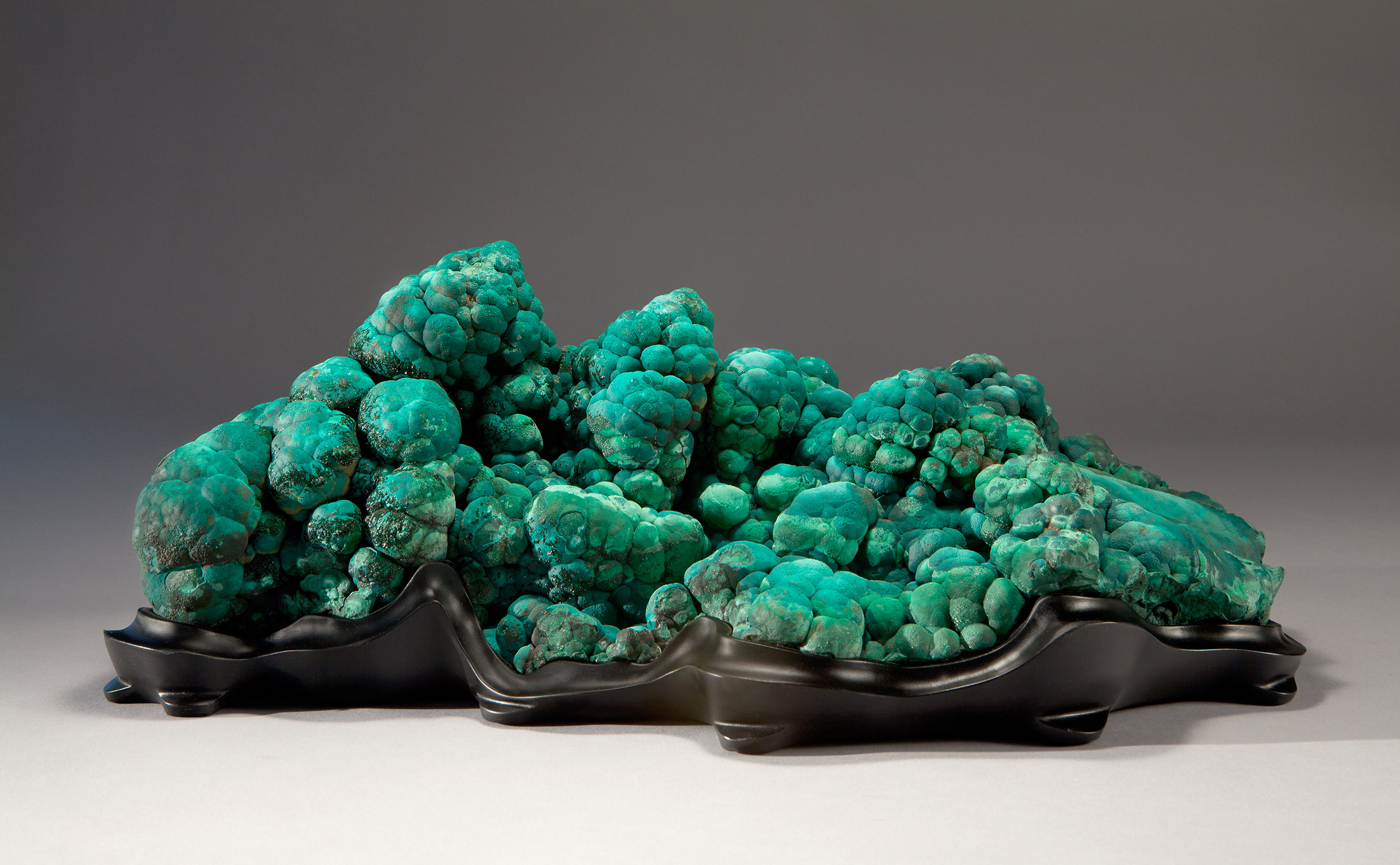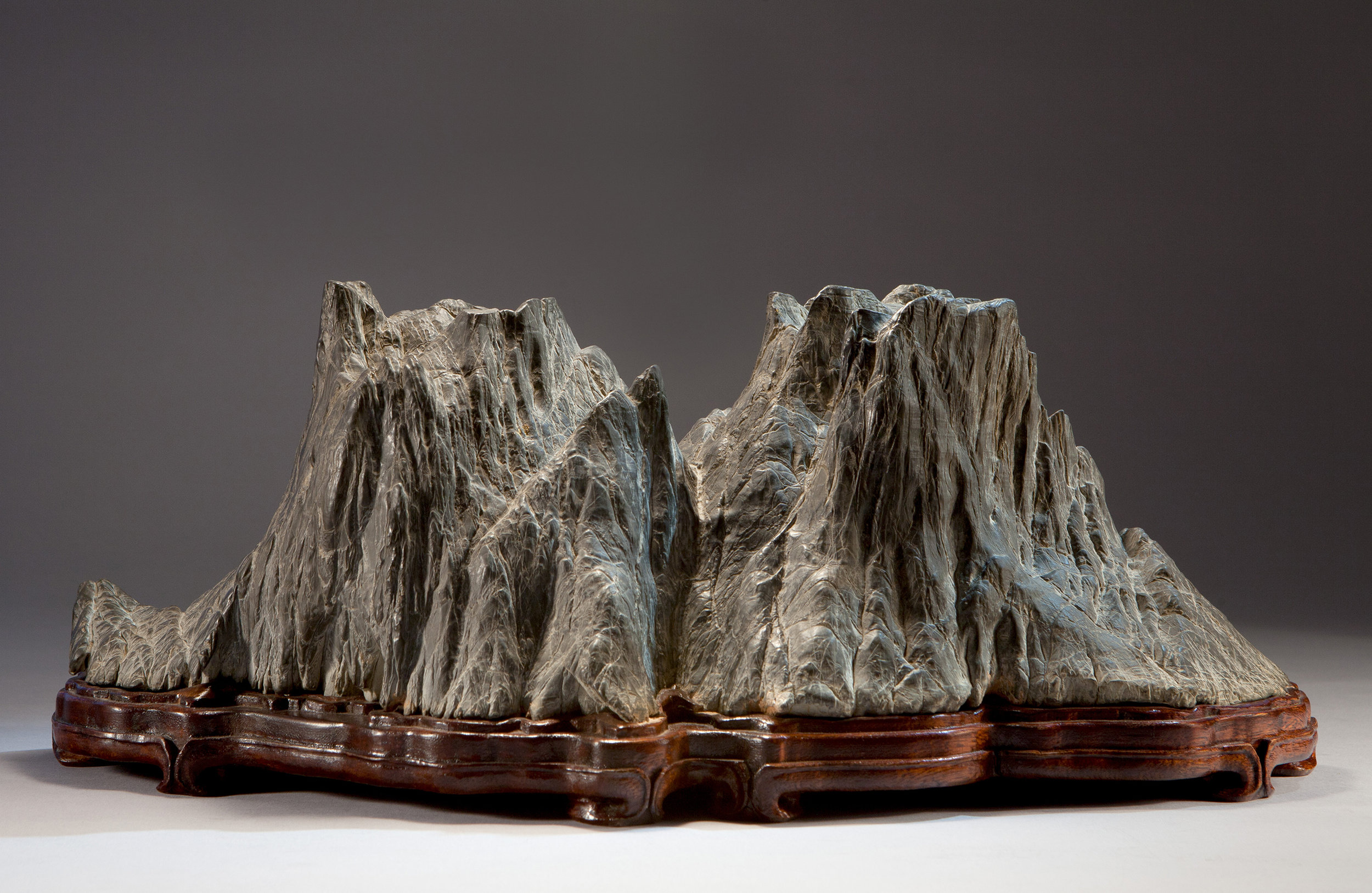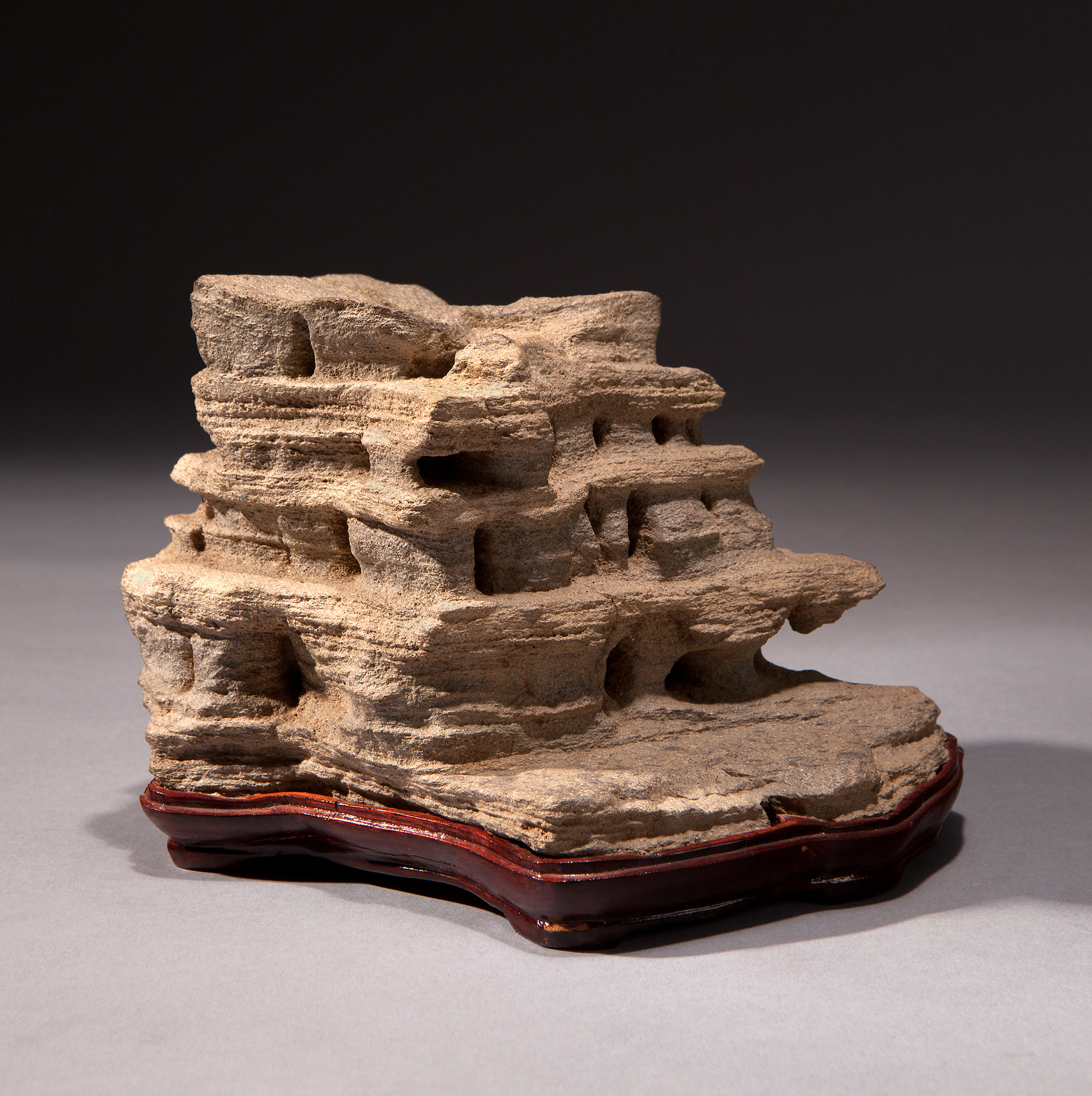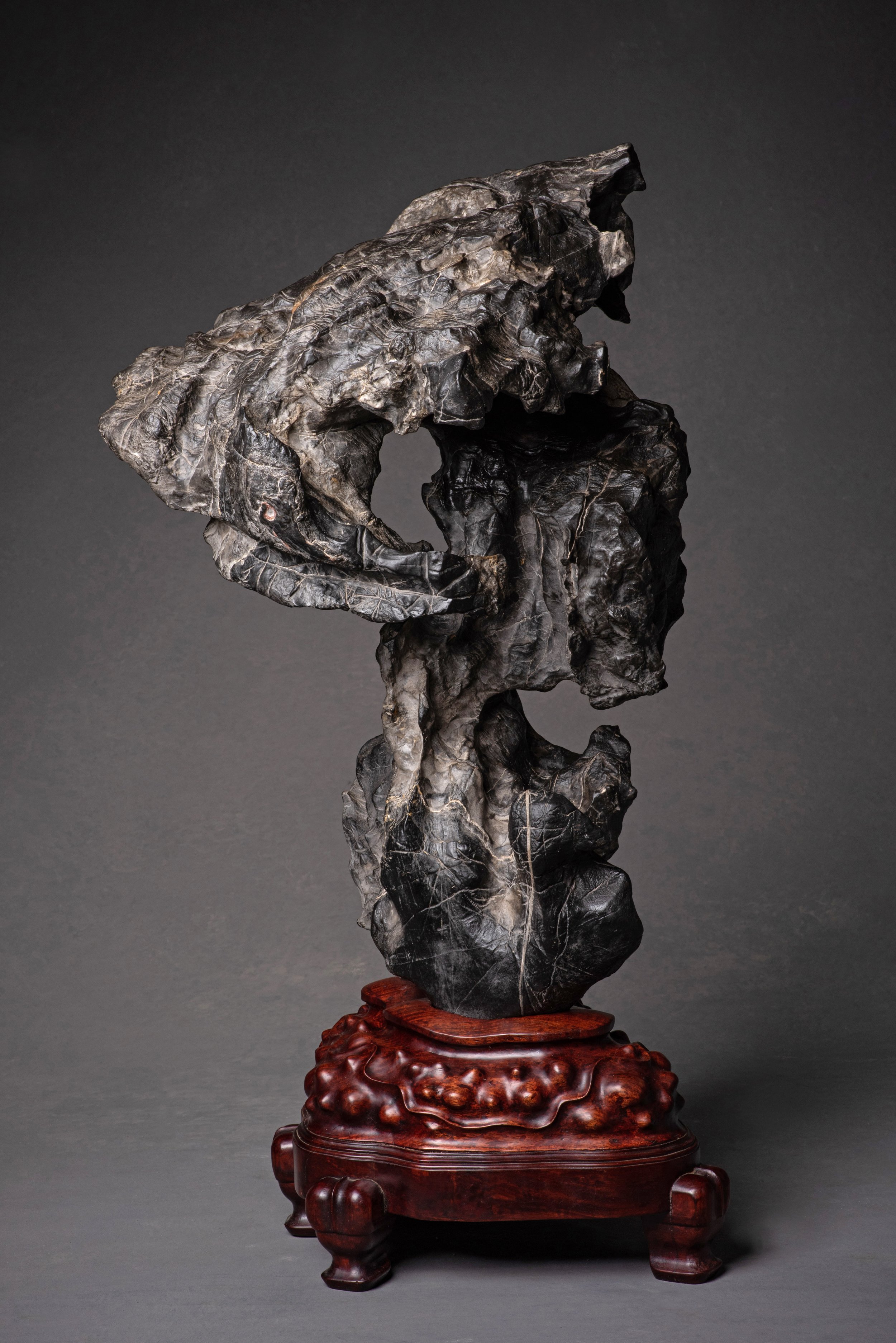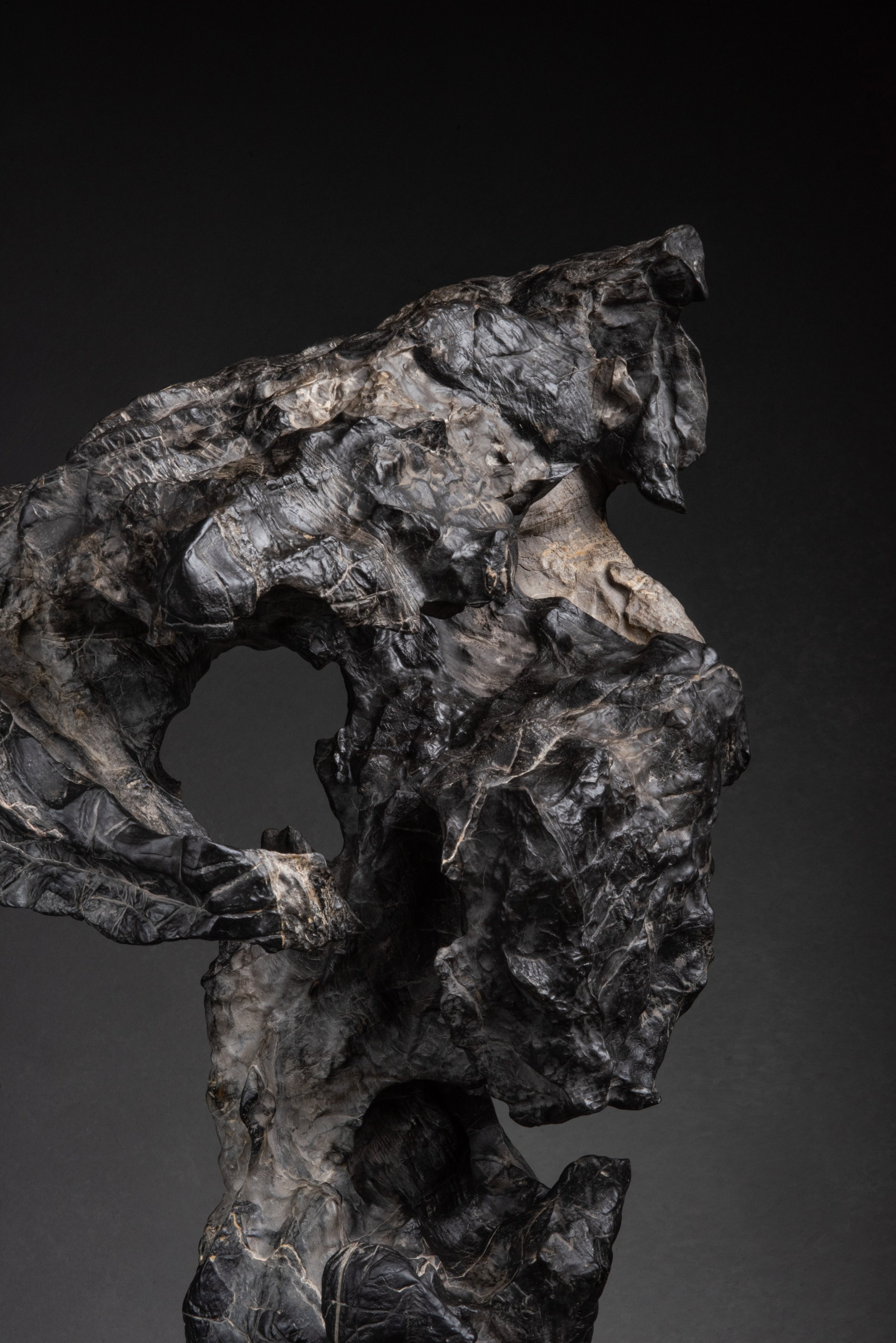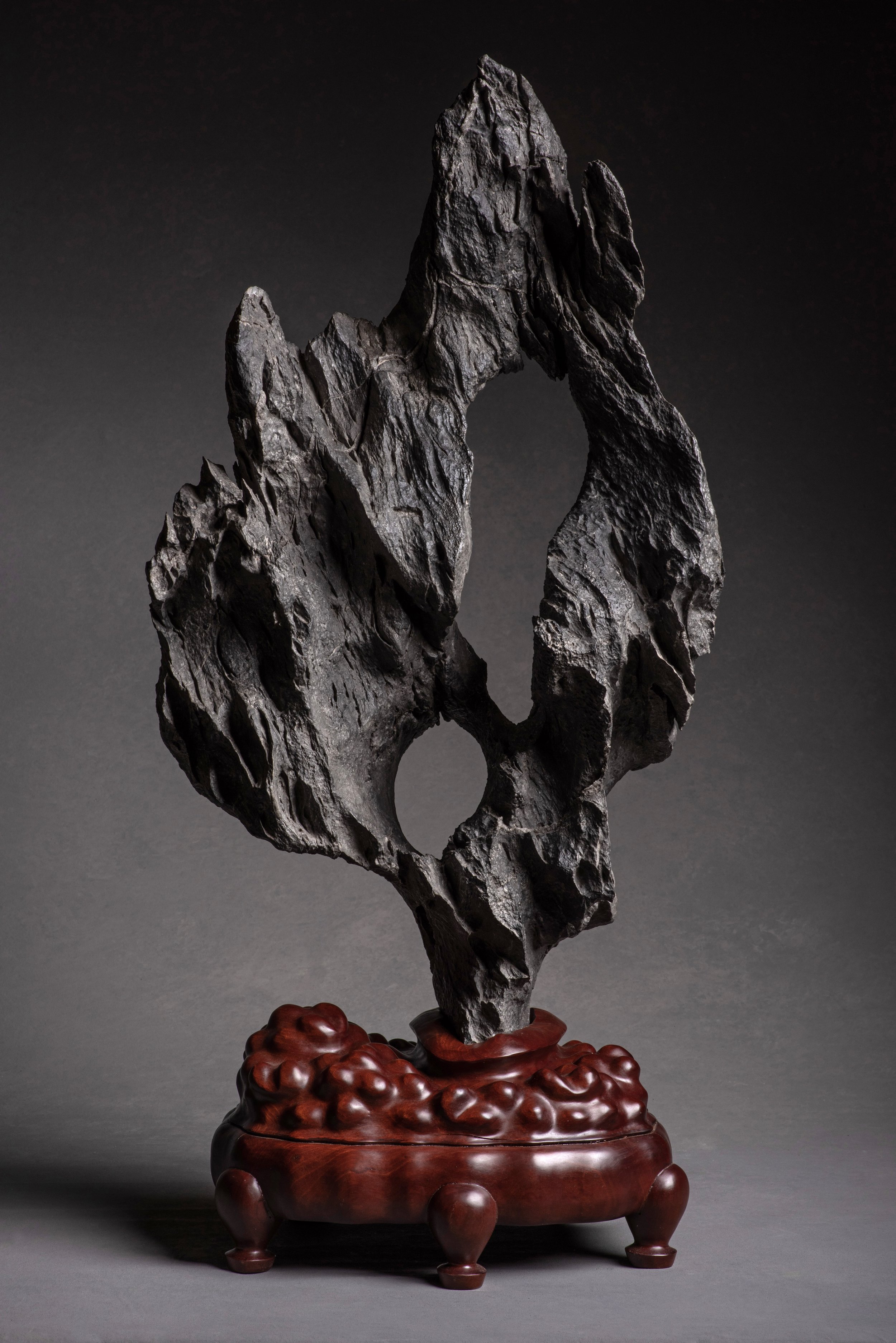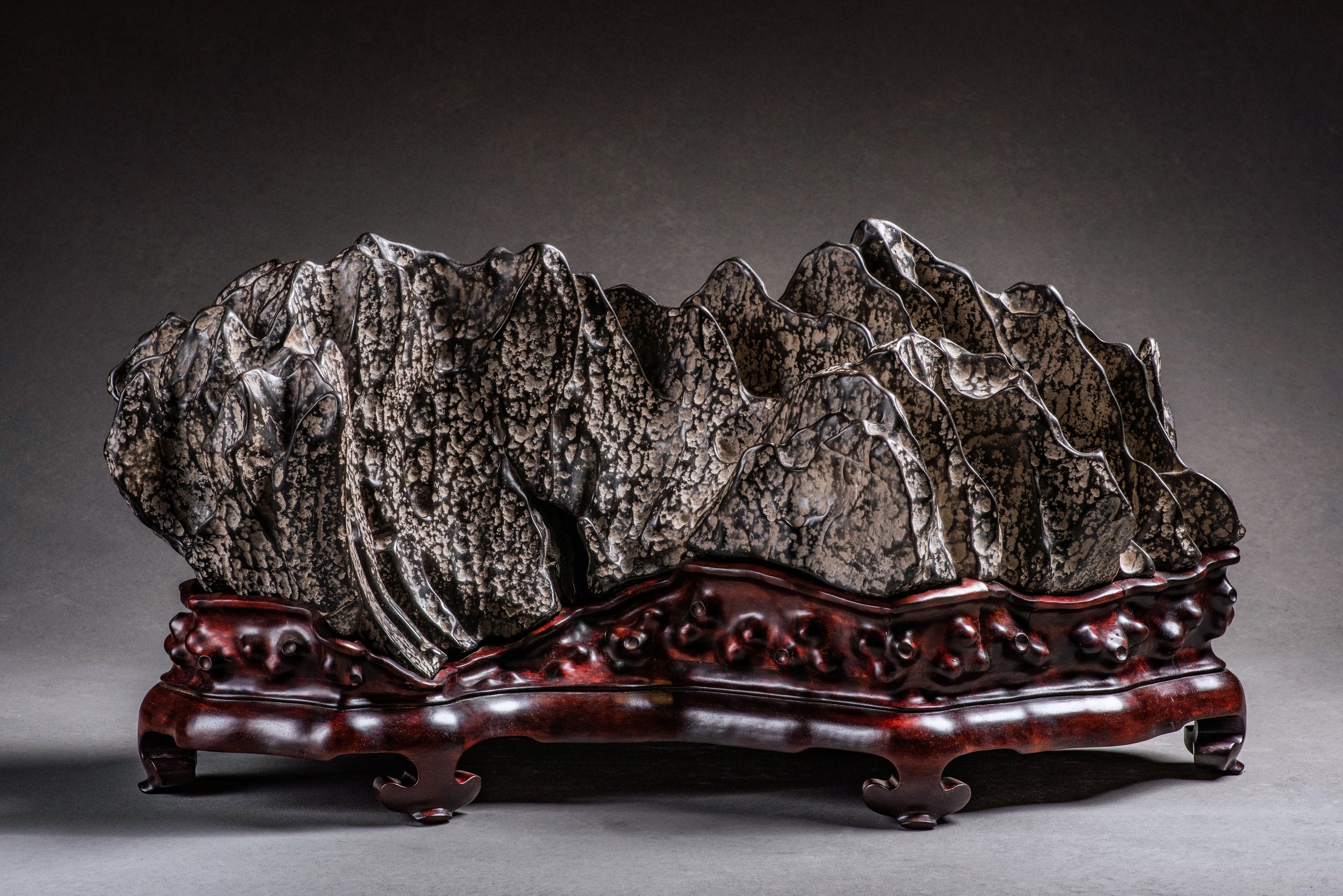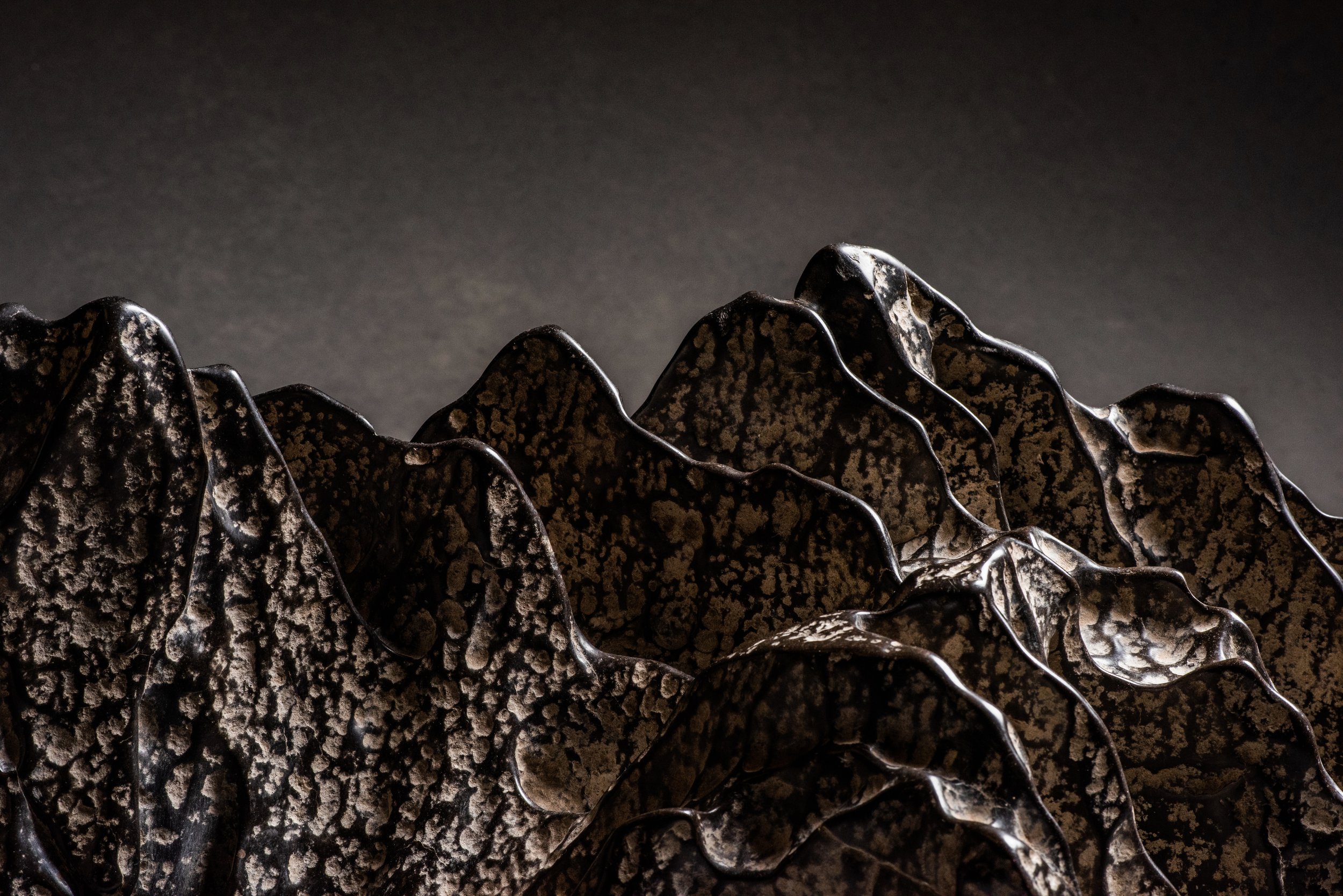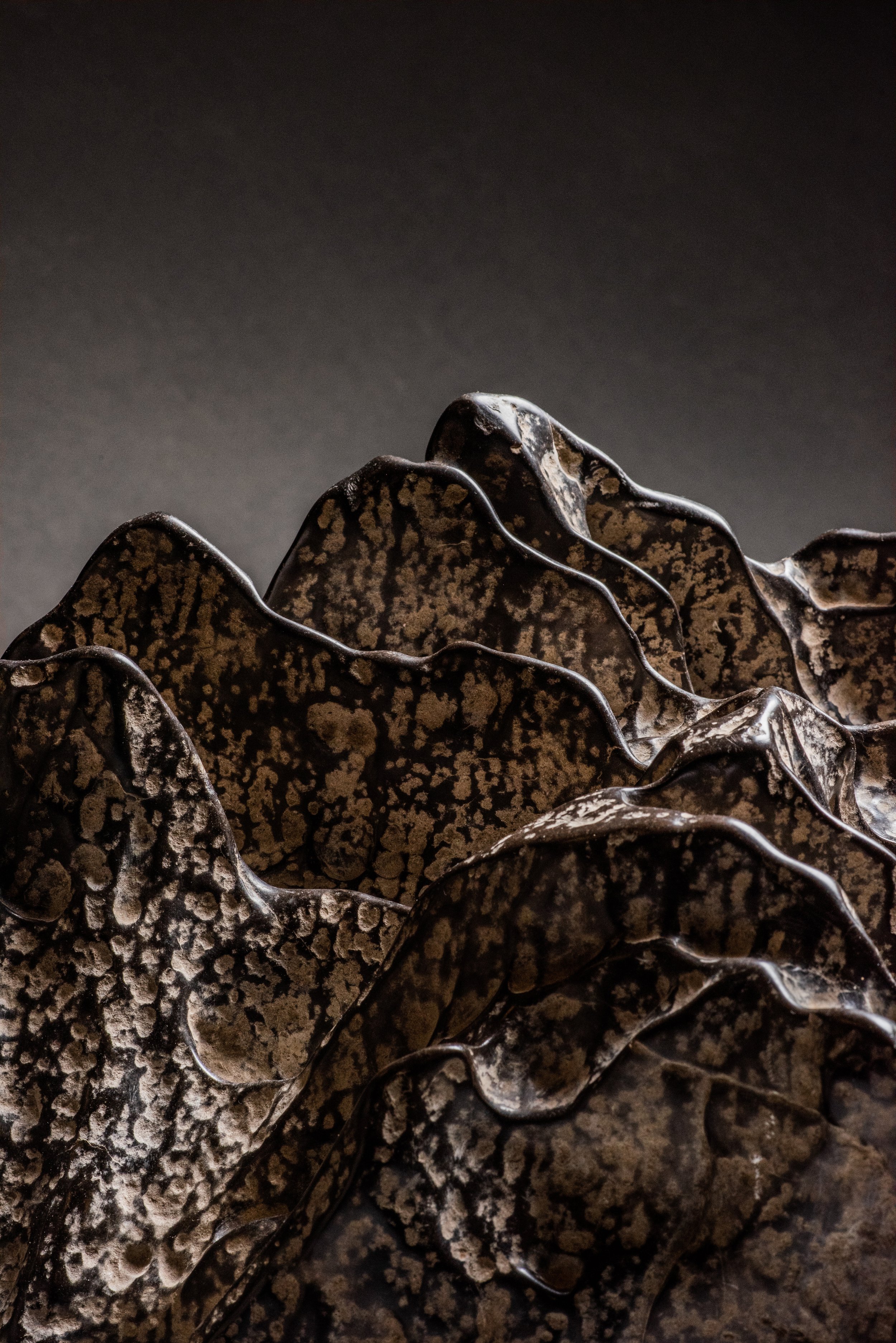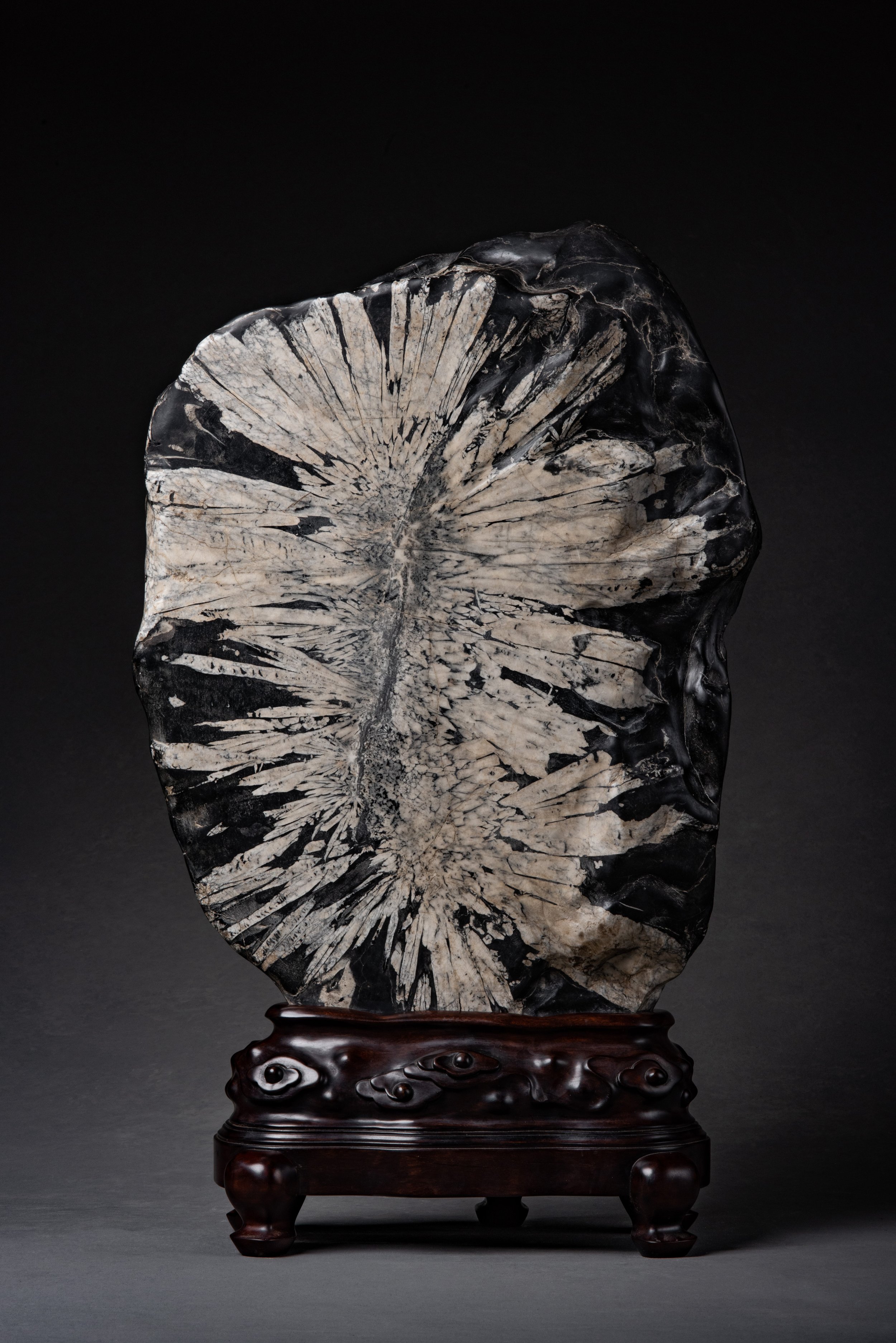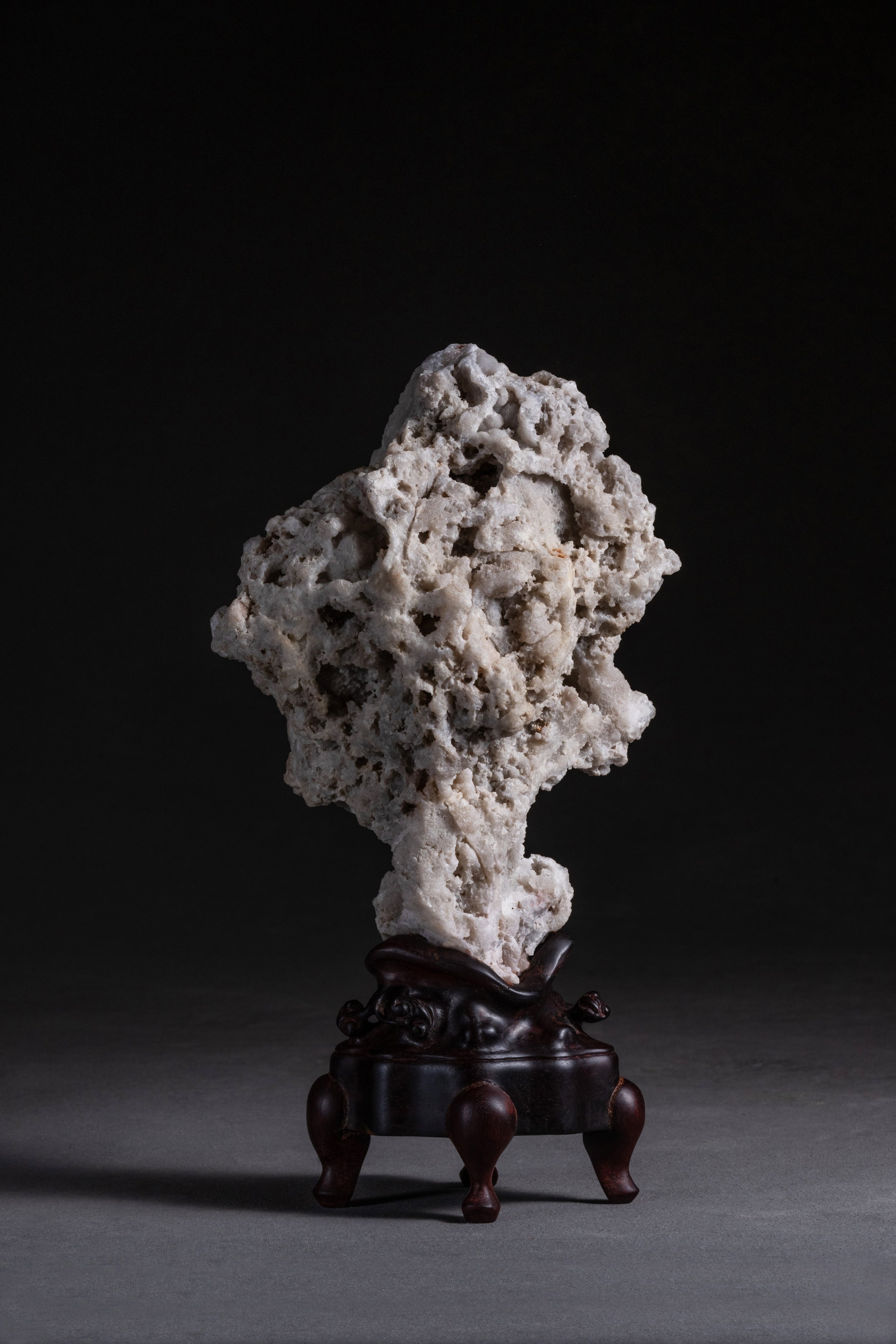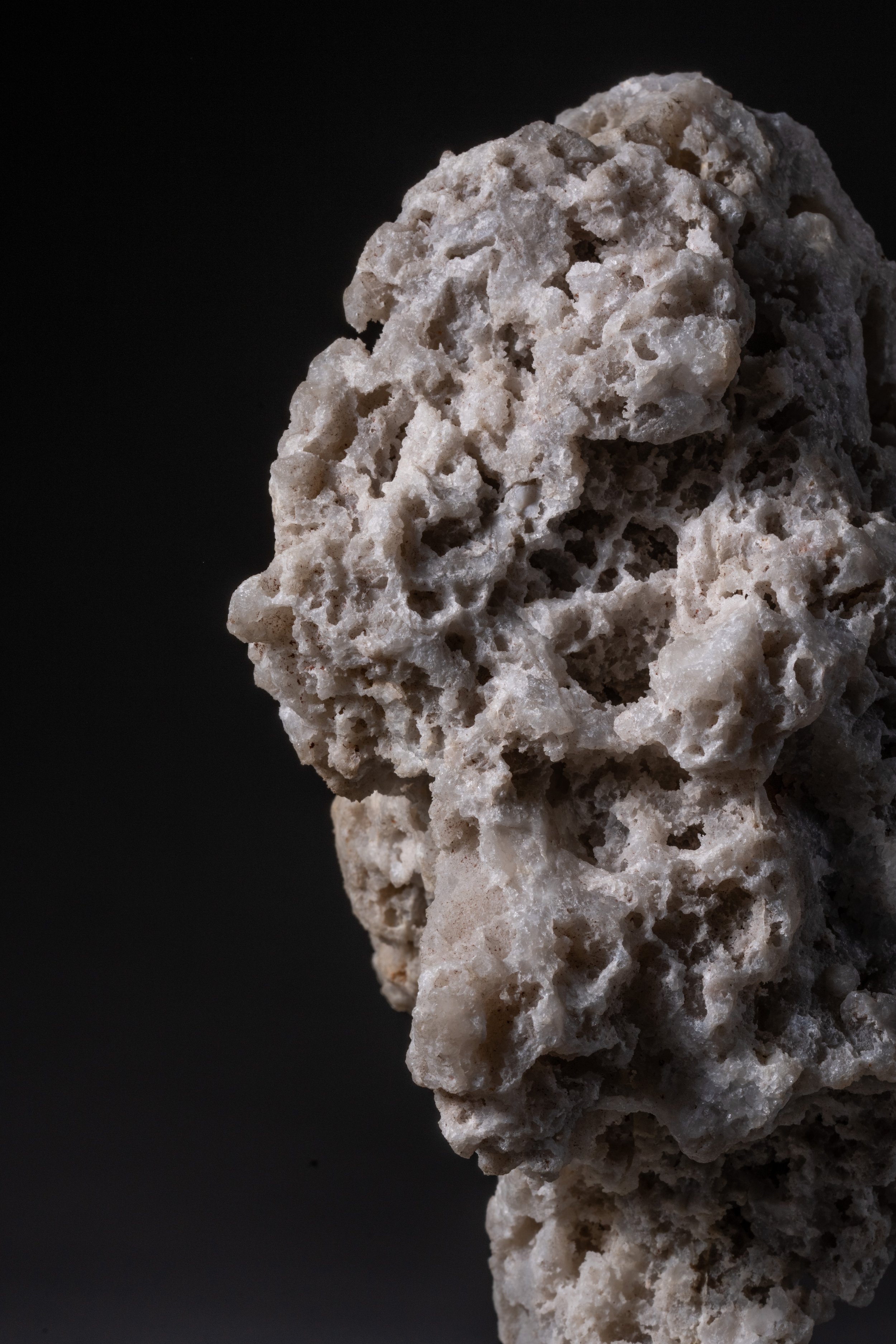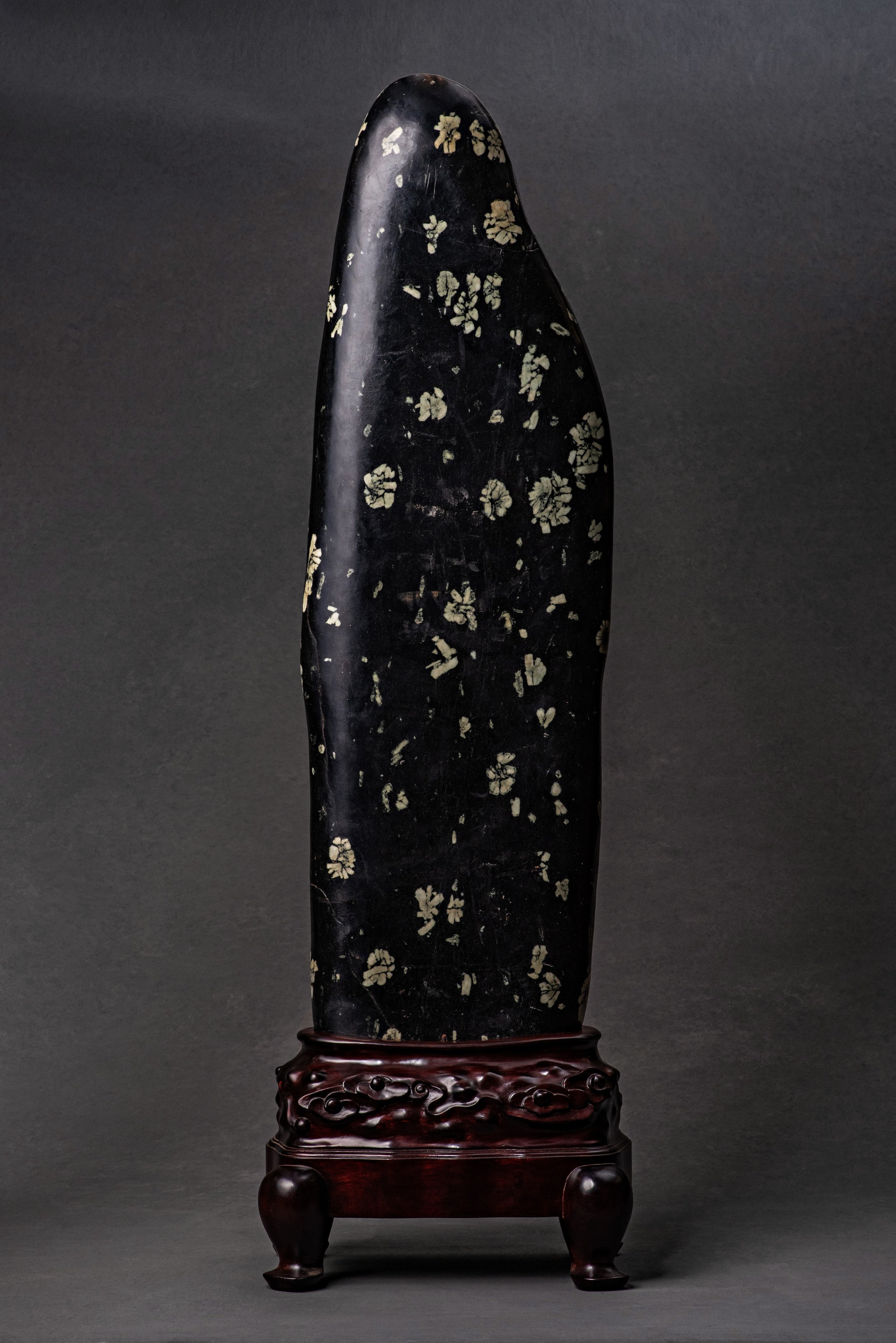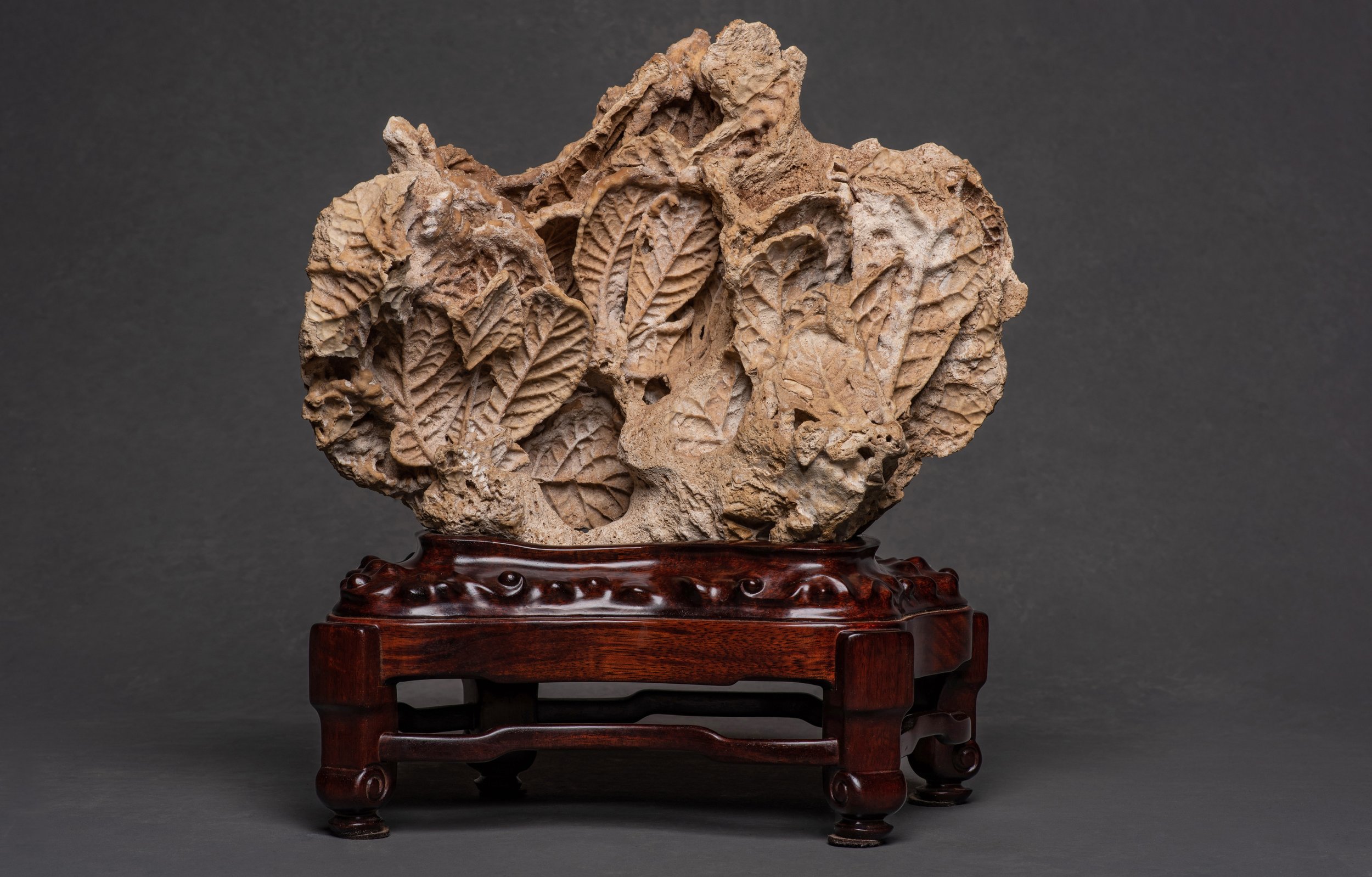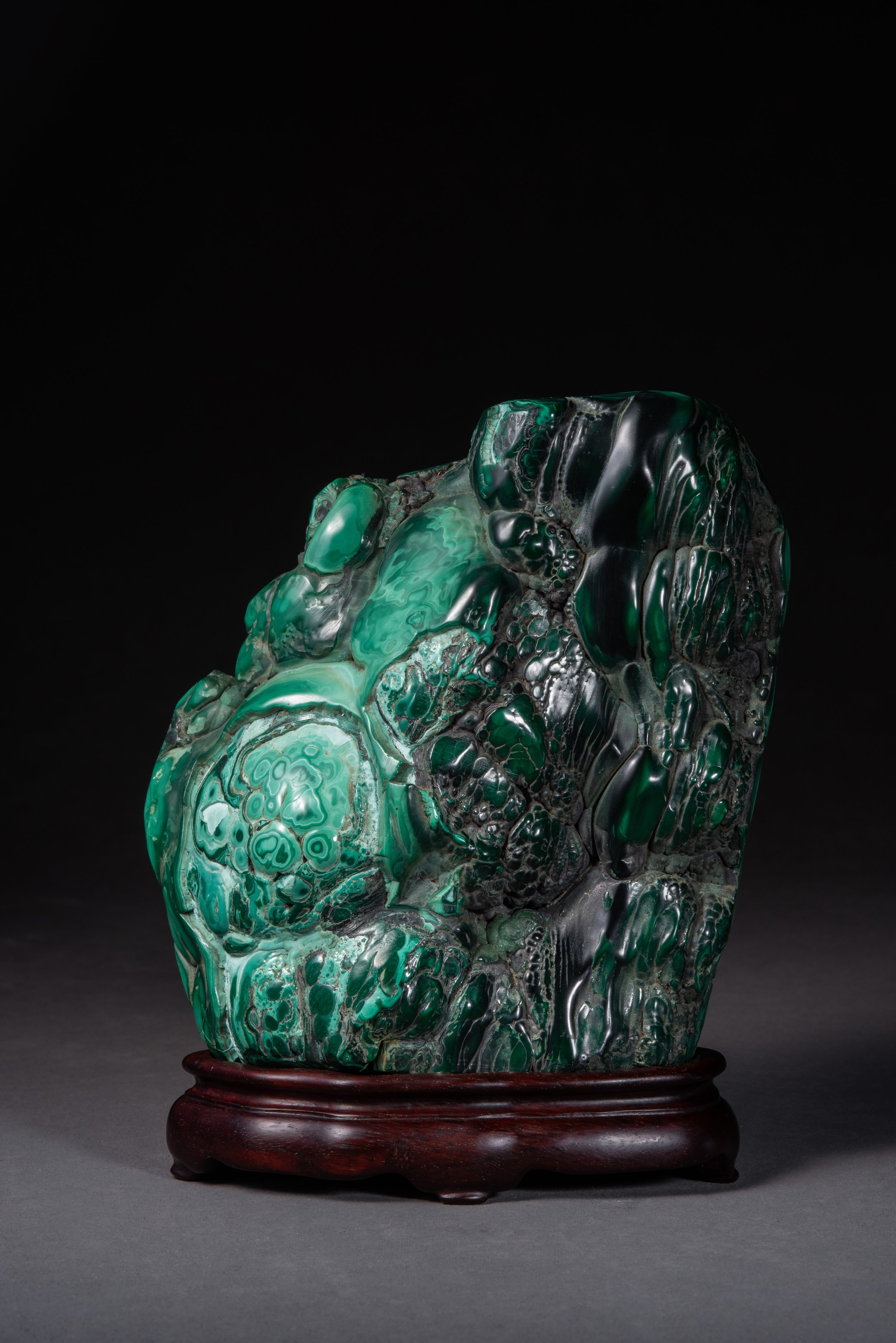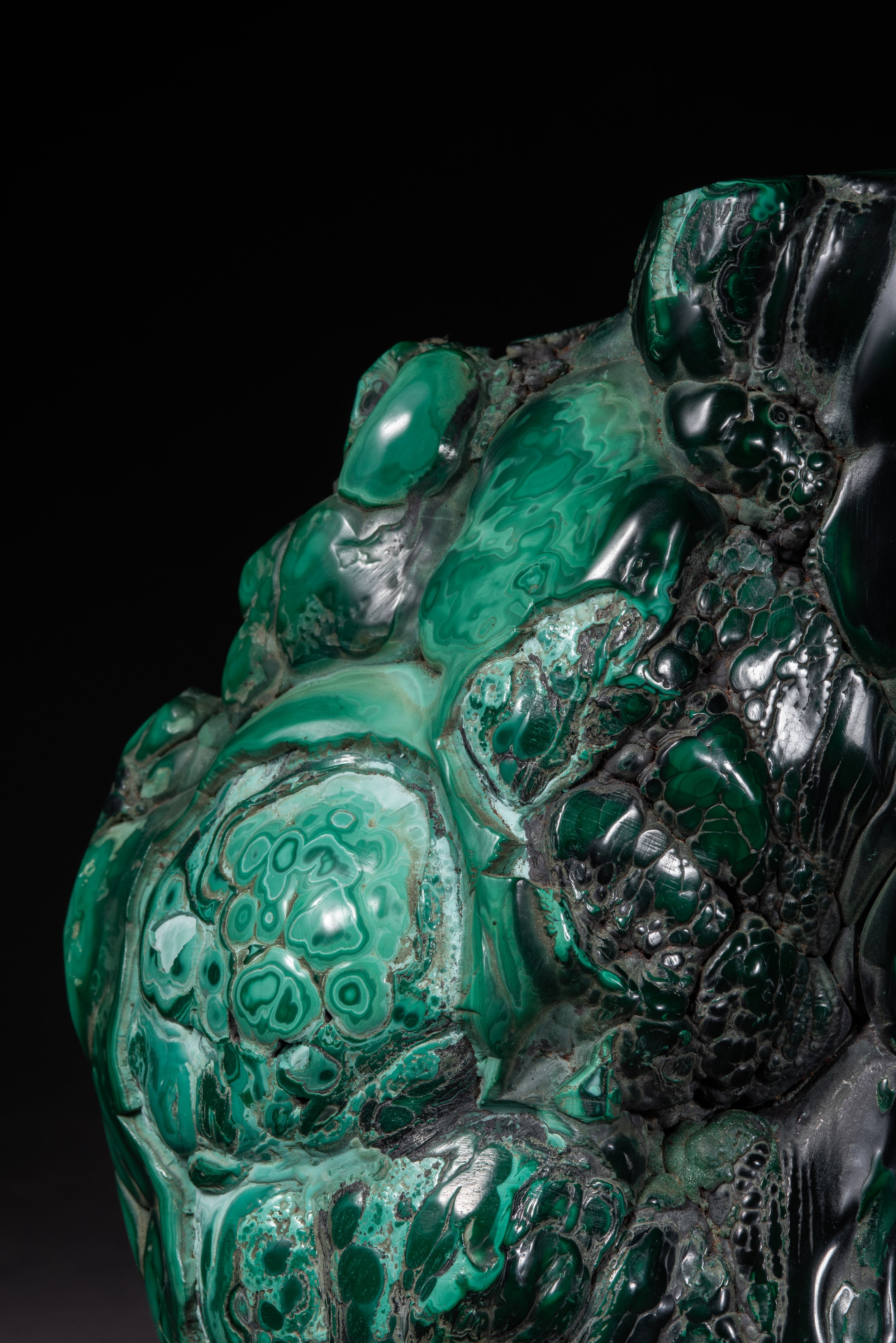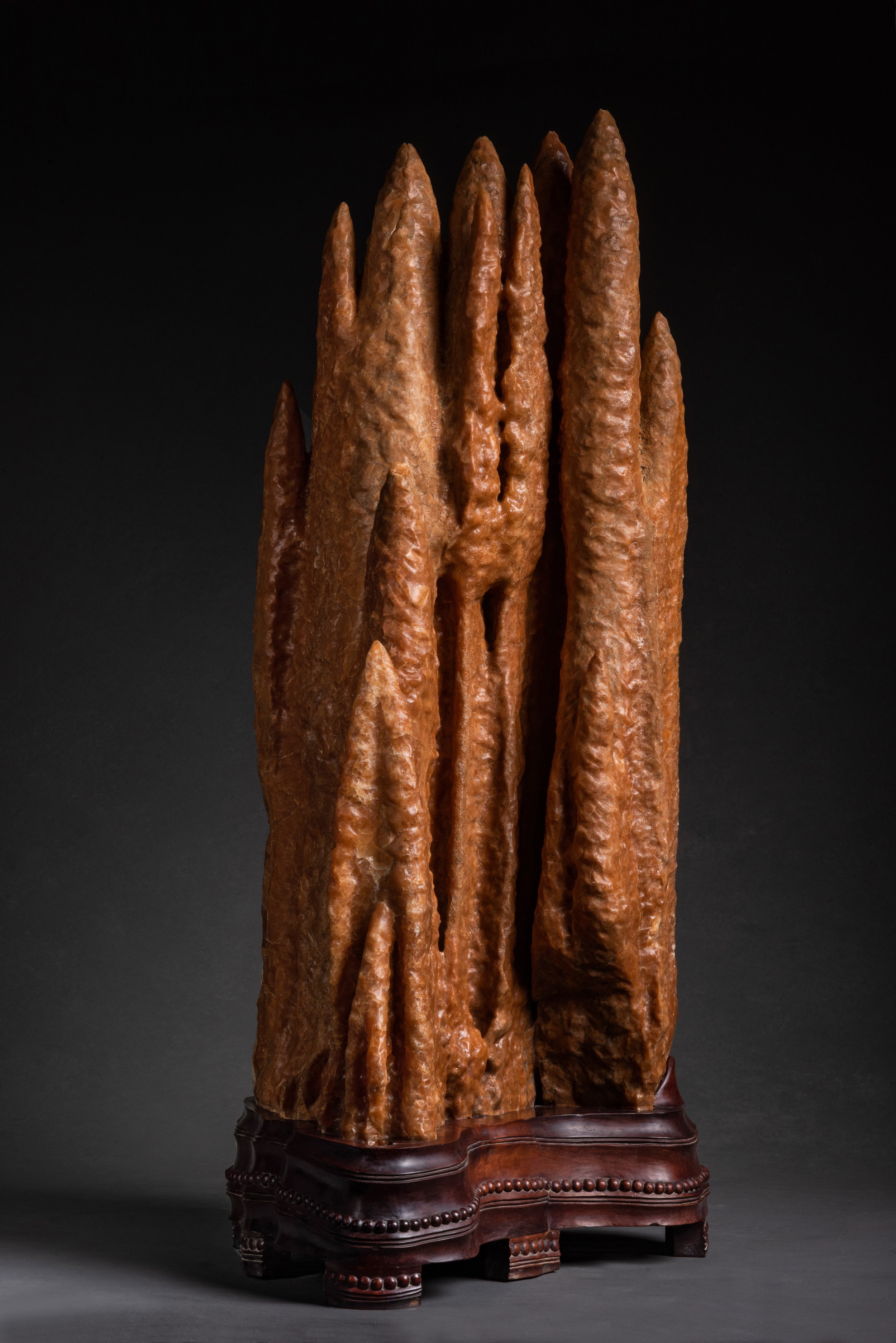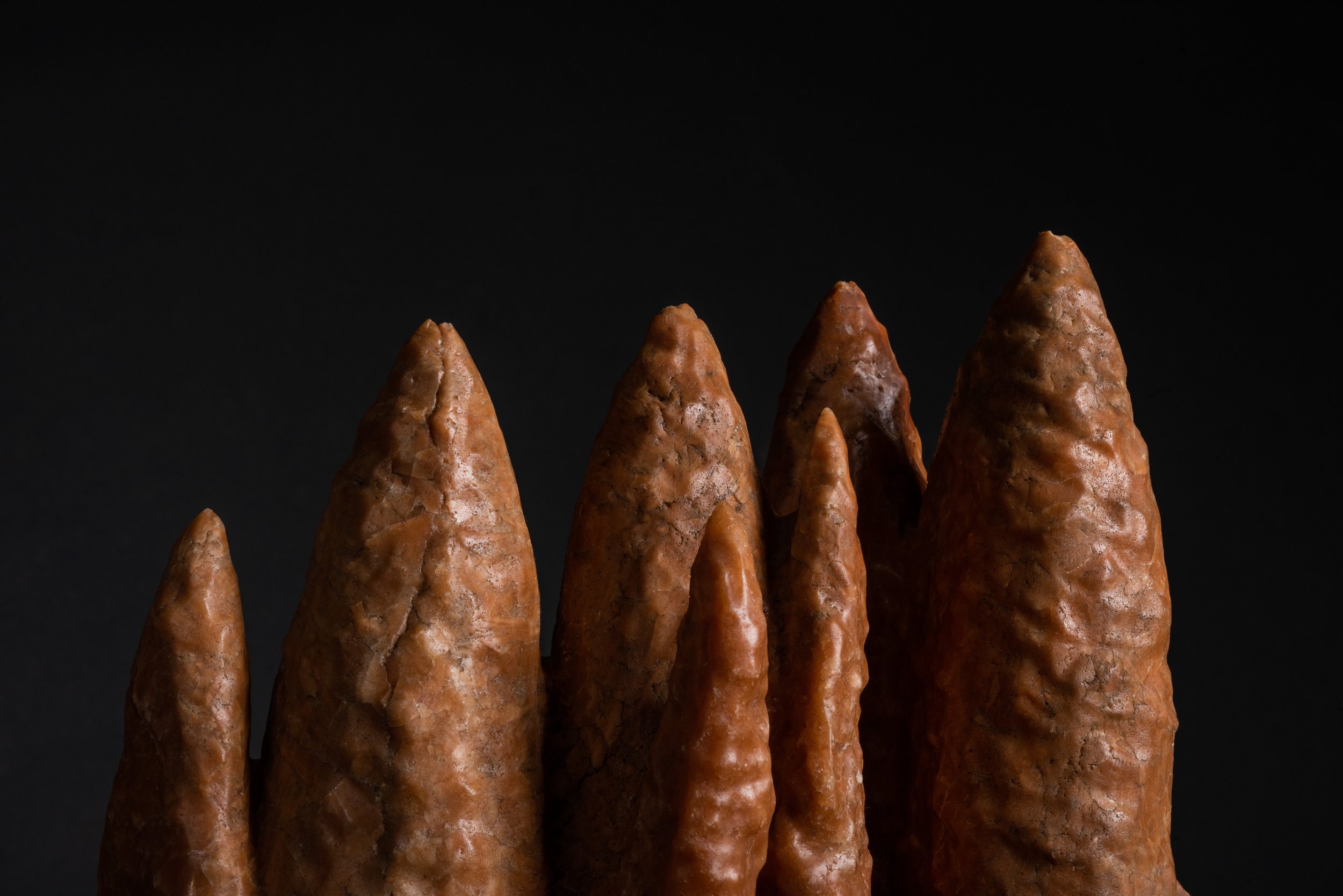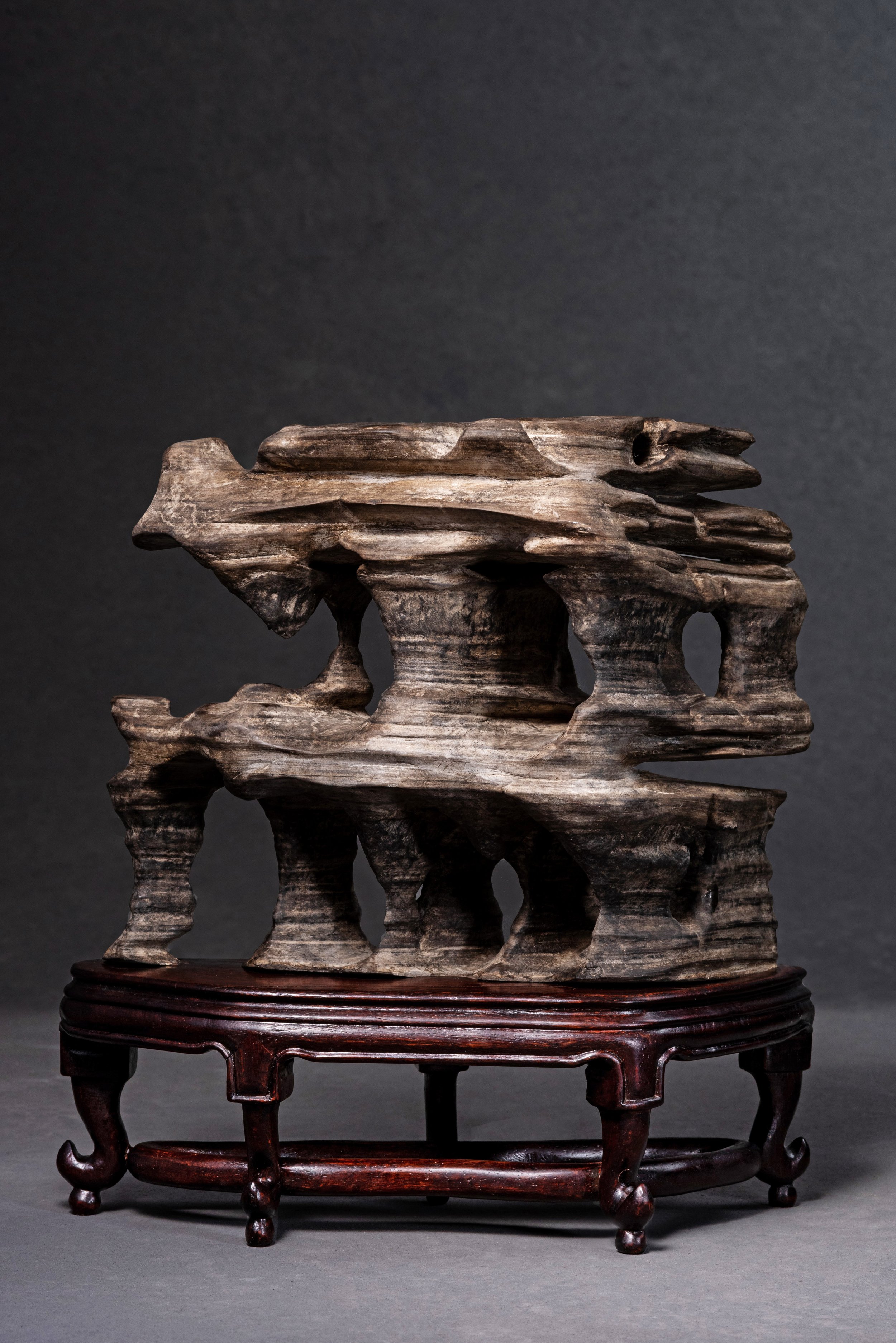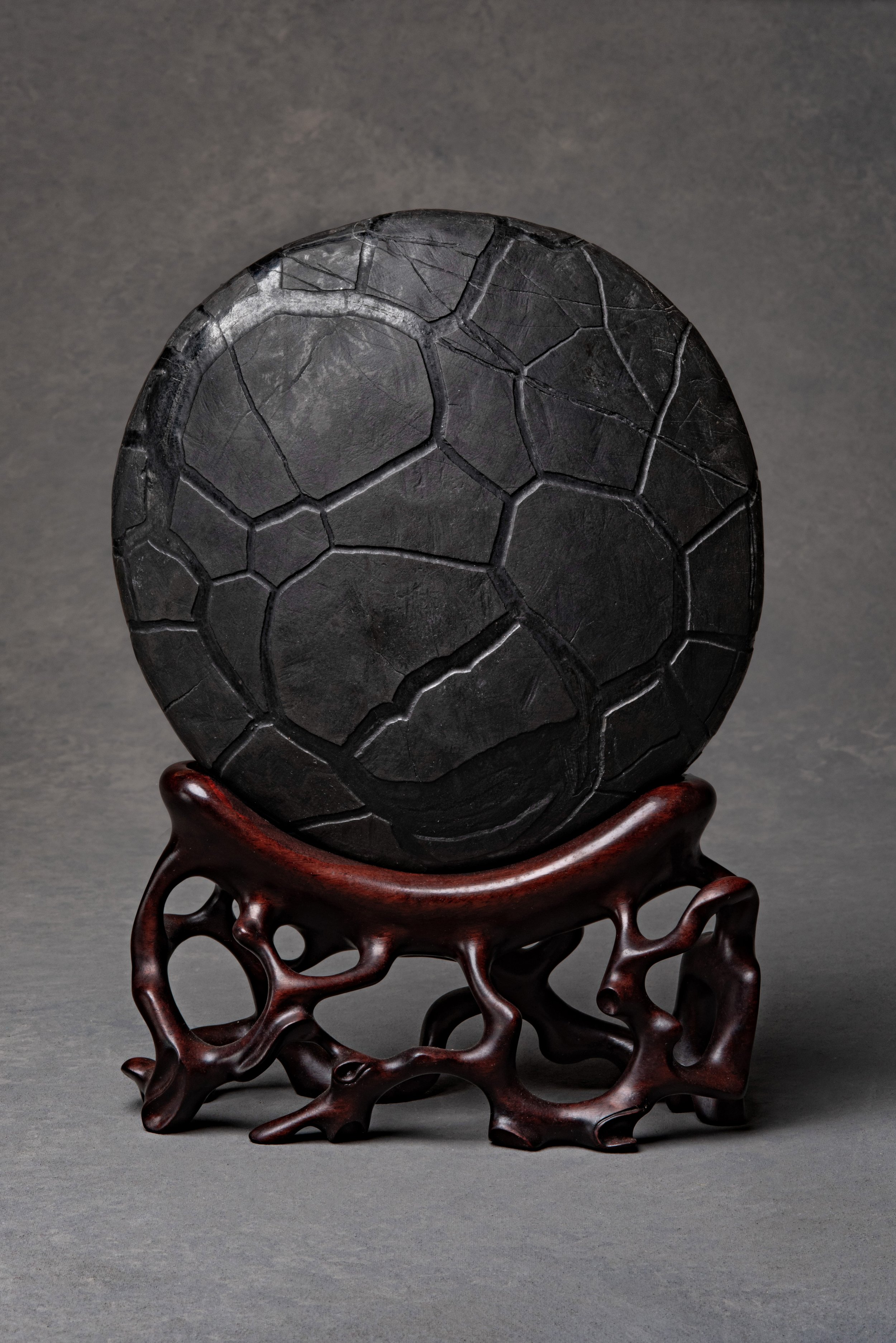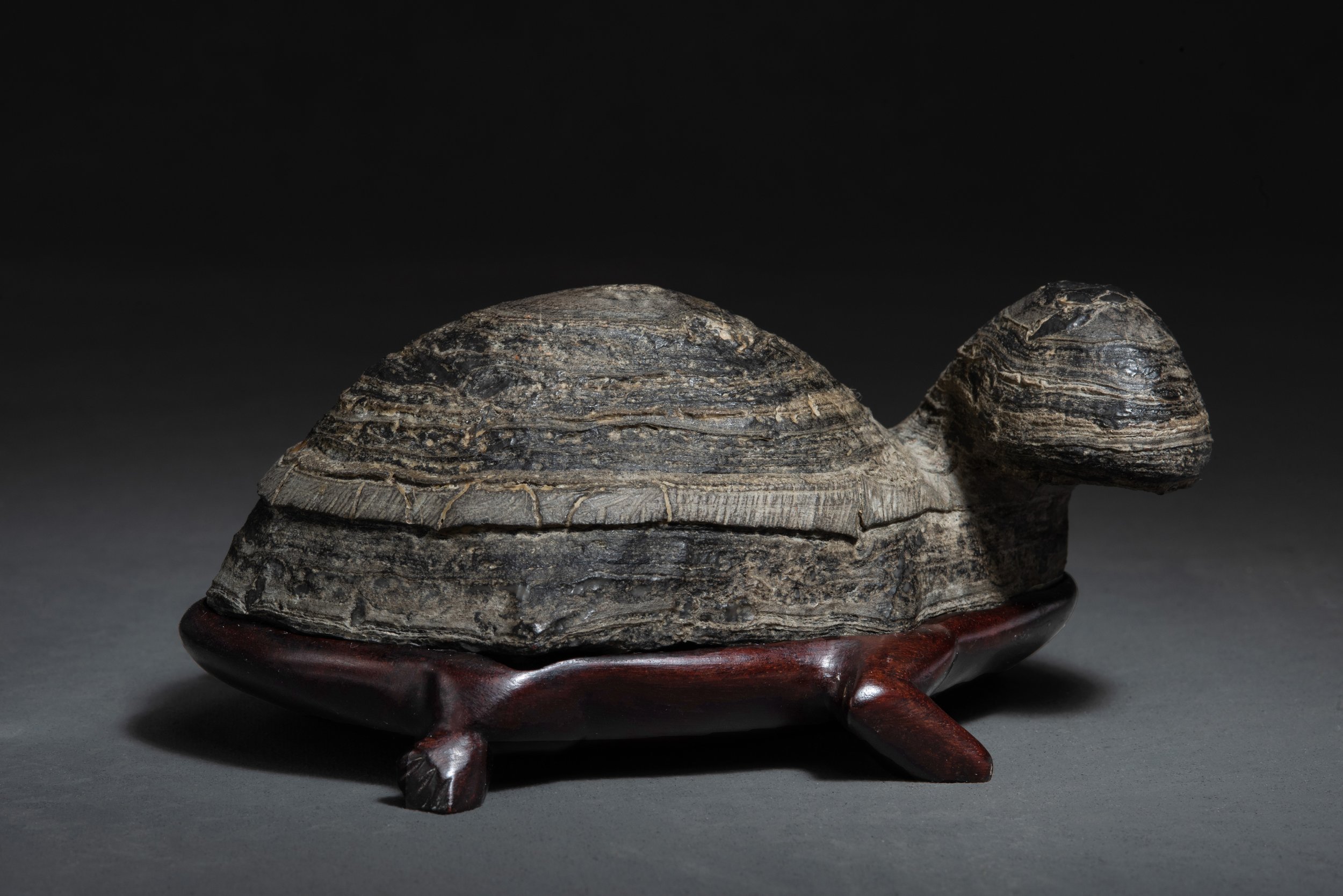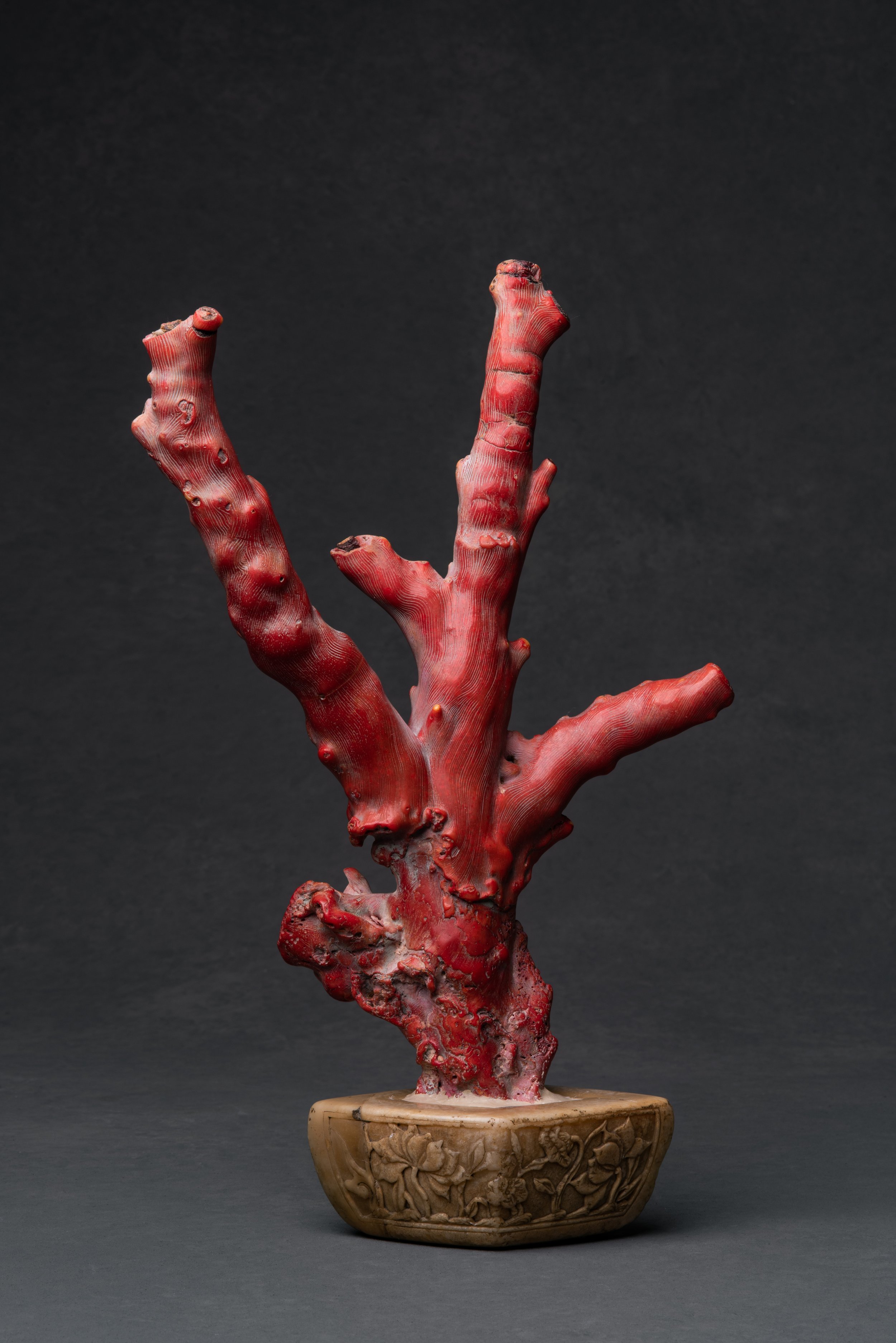The National Bonsai and Penjing Museum is well-known for its display of masterpiece living specimens of bonsai and penjing. A lesser known jewel is the Museum’s world-class collection of viewing stones.
Bonsai and viewing stones are closely related art forms, each reflecting a deep respect for nature. While a bonsai is cultivated to evoke the qualities of a venerable old tree, a viewing stone is usually displayed to suggest an aspect of the natural landscape, such as a distant mountain or a waterfall. Thus, when these small-scale forms are viewed together in a complementary arrangement, the whole of nature can be imagined.
The collection began with six Japanese viewing stones that accompanied the gift of bonsai from Japan on the occasion of the American Bicentennial in 1976. Today there are 105 stones from different countries: Japan, China, Indonesia, South Africa, Zaire, Namibia, Italy, Canada, and the United States. The viewing stone collection has expanded to include stones outside the formal requirements of Japanese viewing stones—such as Chinese scholars’ rocks and abstract natural stones.

Mary Mrose Exhibit Gallery at the National Bonsai & Penjing Museum at the U.S. National Arboretum in Washington, DC.
The stones are displayed in and around the Museum’s Mary Mrose Exhibit Gallery. Cases in The Melba Tucker Suiseki and Viewing Stone Display Area are periodically installed with different stones. The displays in the Japanese tokonoma (an alcove for art display in a Japanese home) and the Chinese scholar’s room provide a cultural context for the appreciation of different types of stones and related arts. The Special Exhibitions Wing provides a place for thematic exhibits which incorporate accessories in a more formal display.
We hope you will visit the collection to see these mesmerizing specimens in person.
Viewing Stones at the National Bonsai & Penjing Museum
Selections from the renowned collection of more than 100 mesmerizing specimens at the Museum.
Click to enlarge any image or view as a slideshow.

